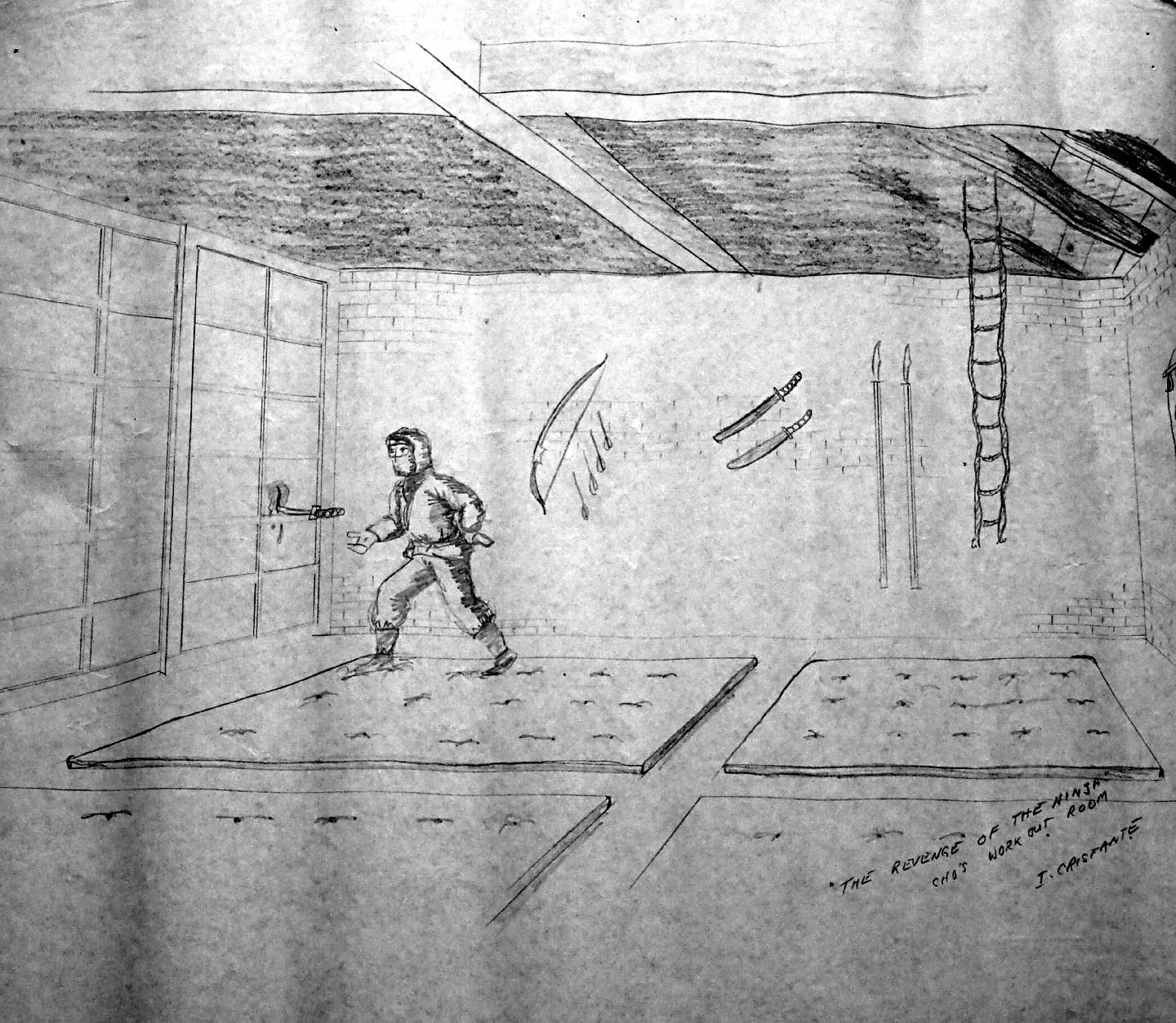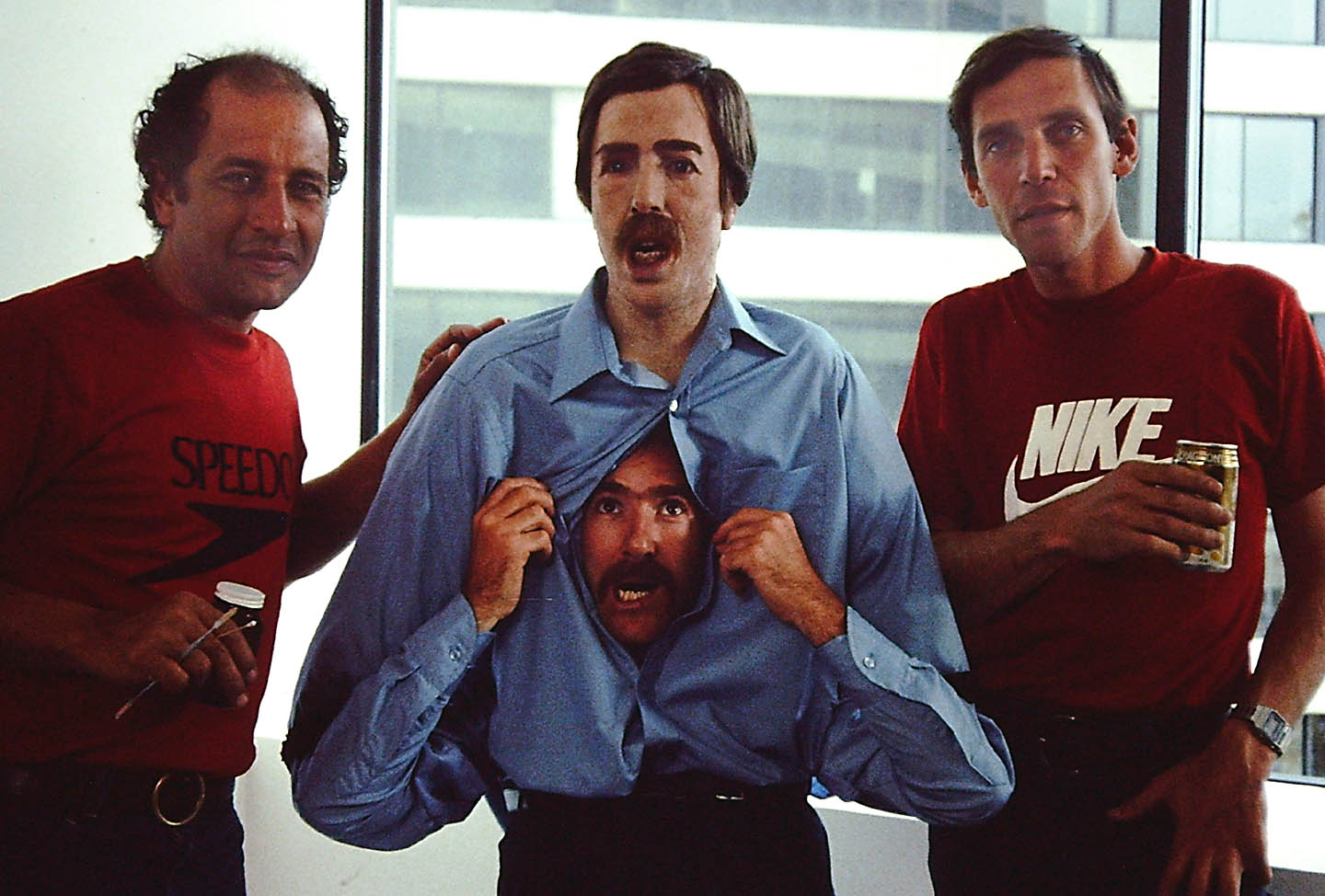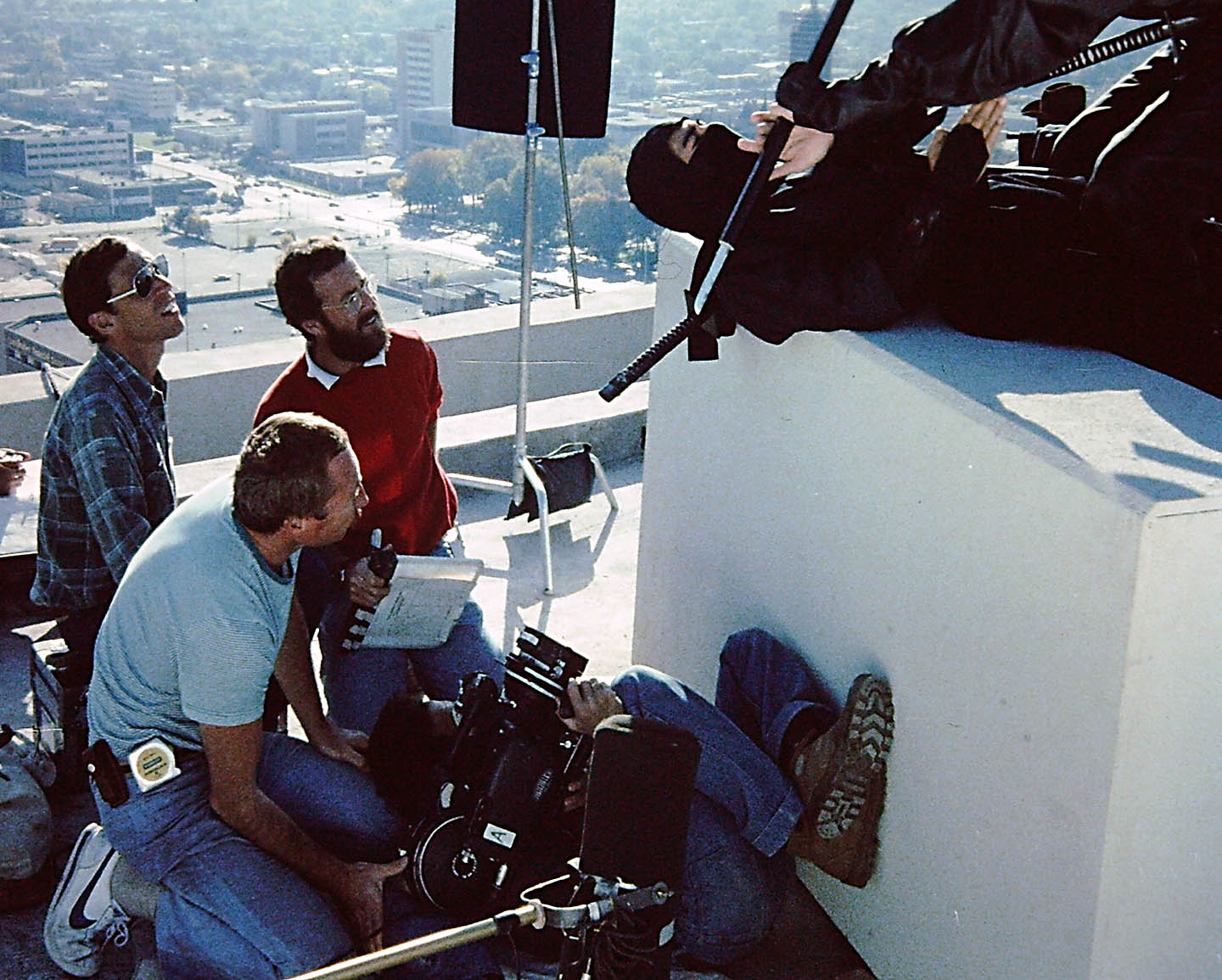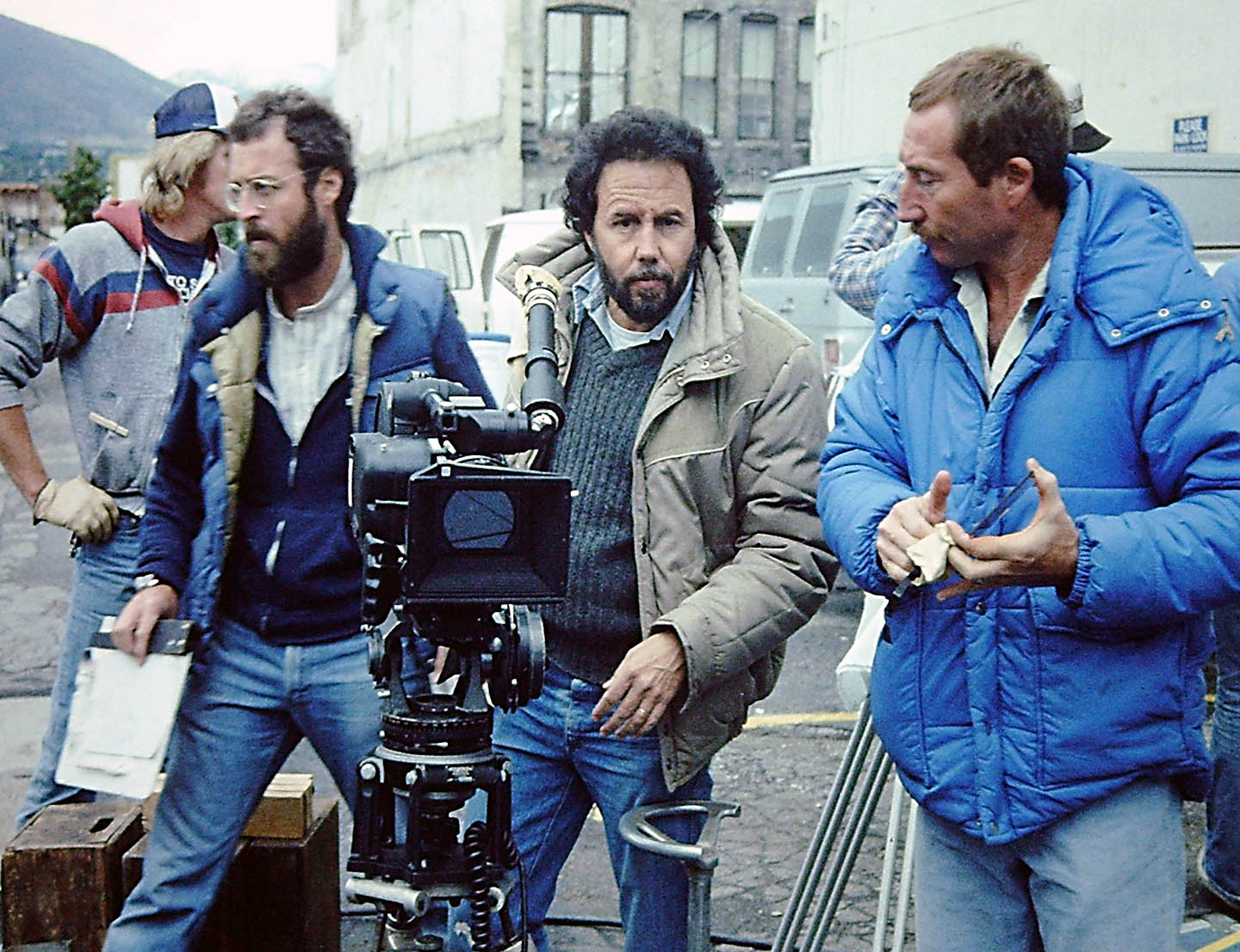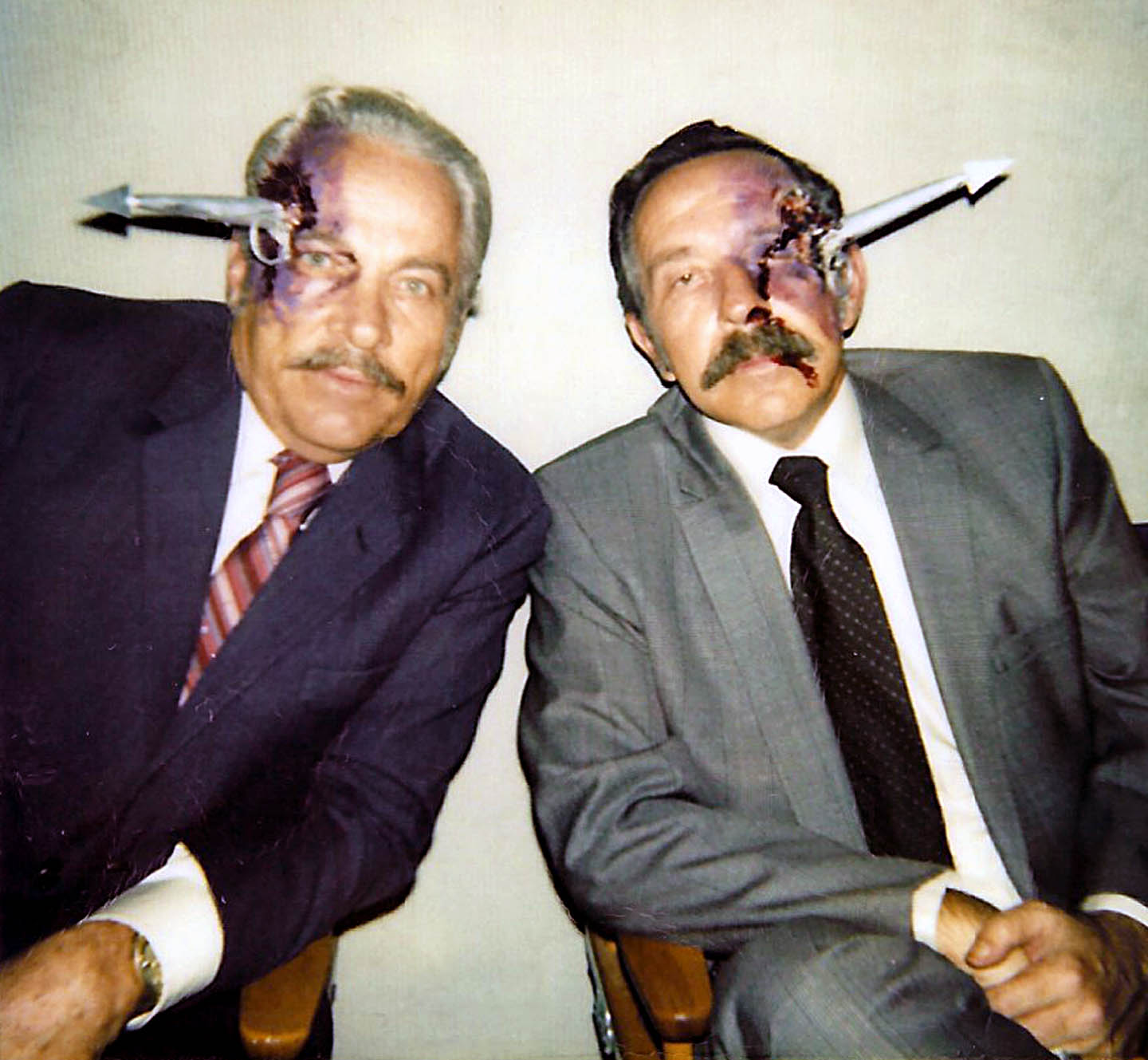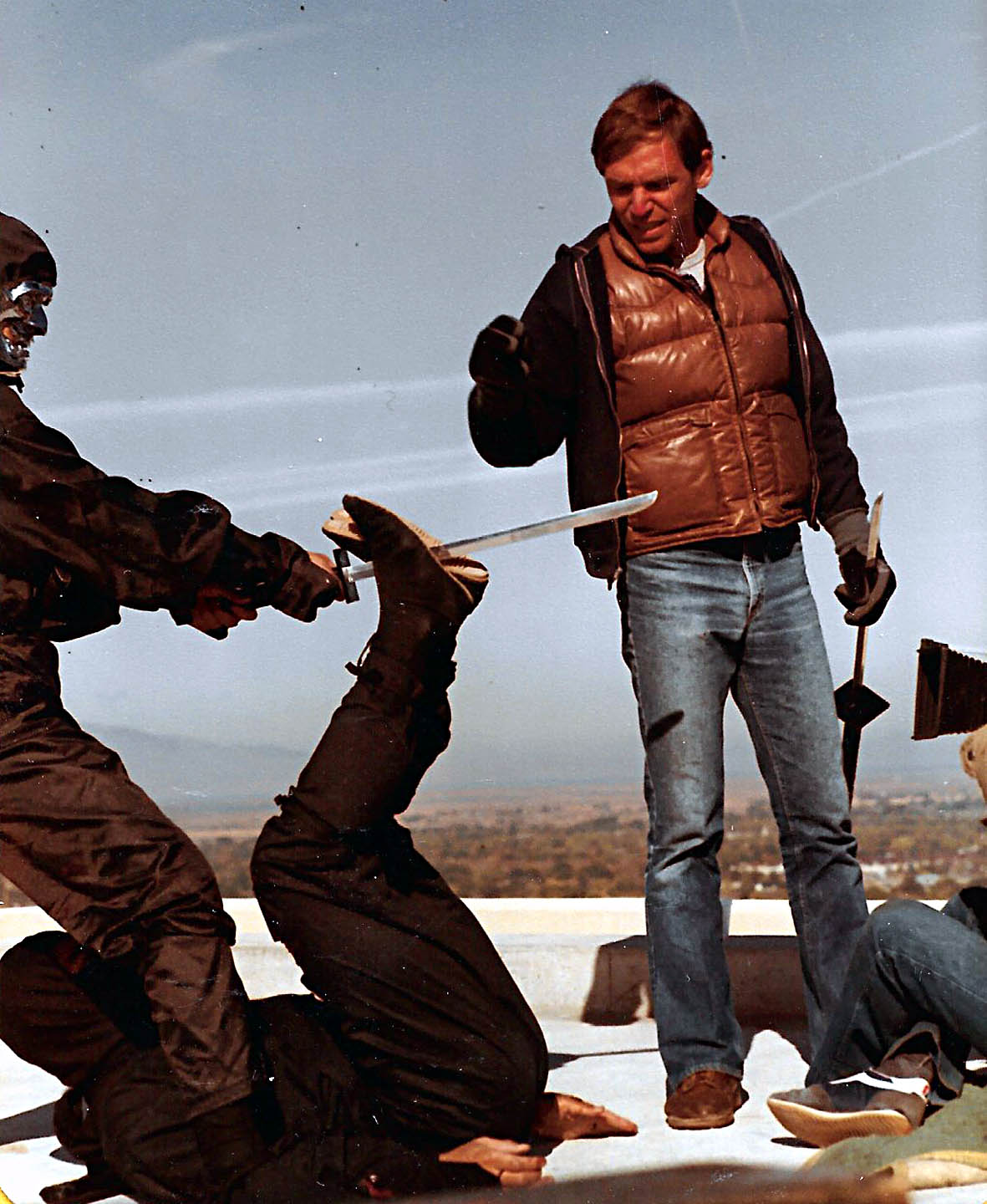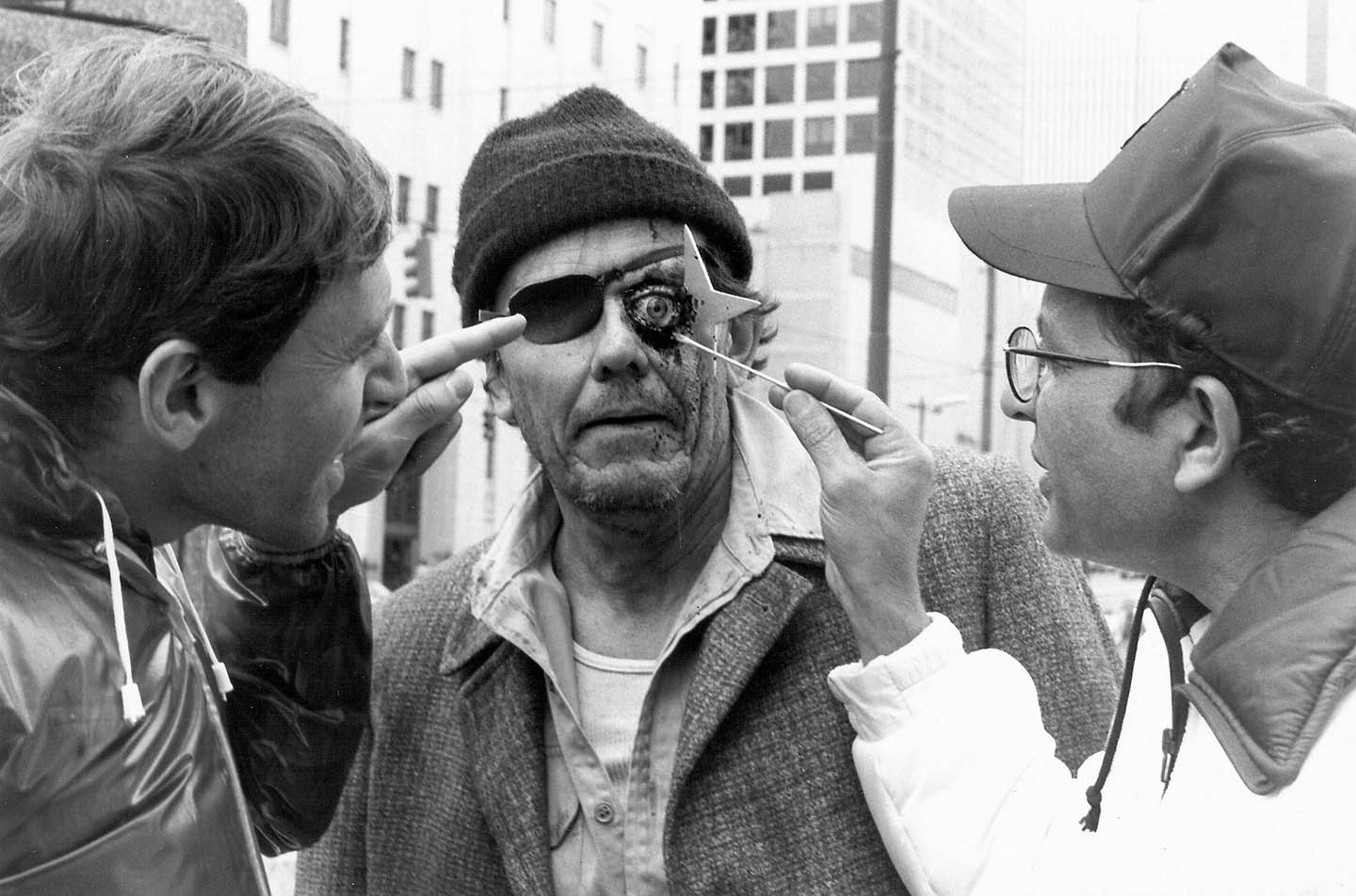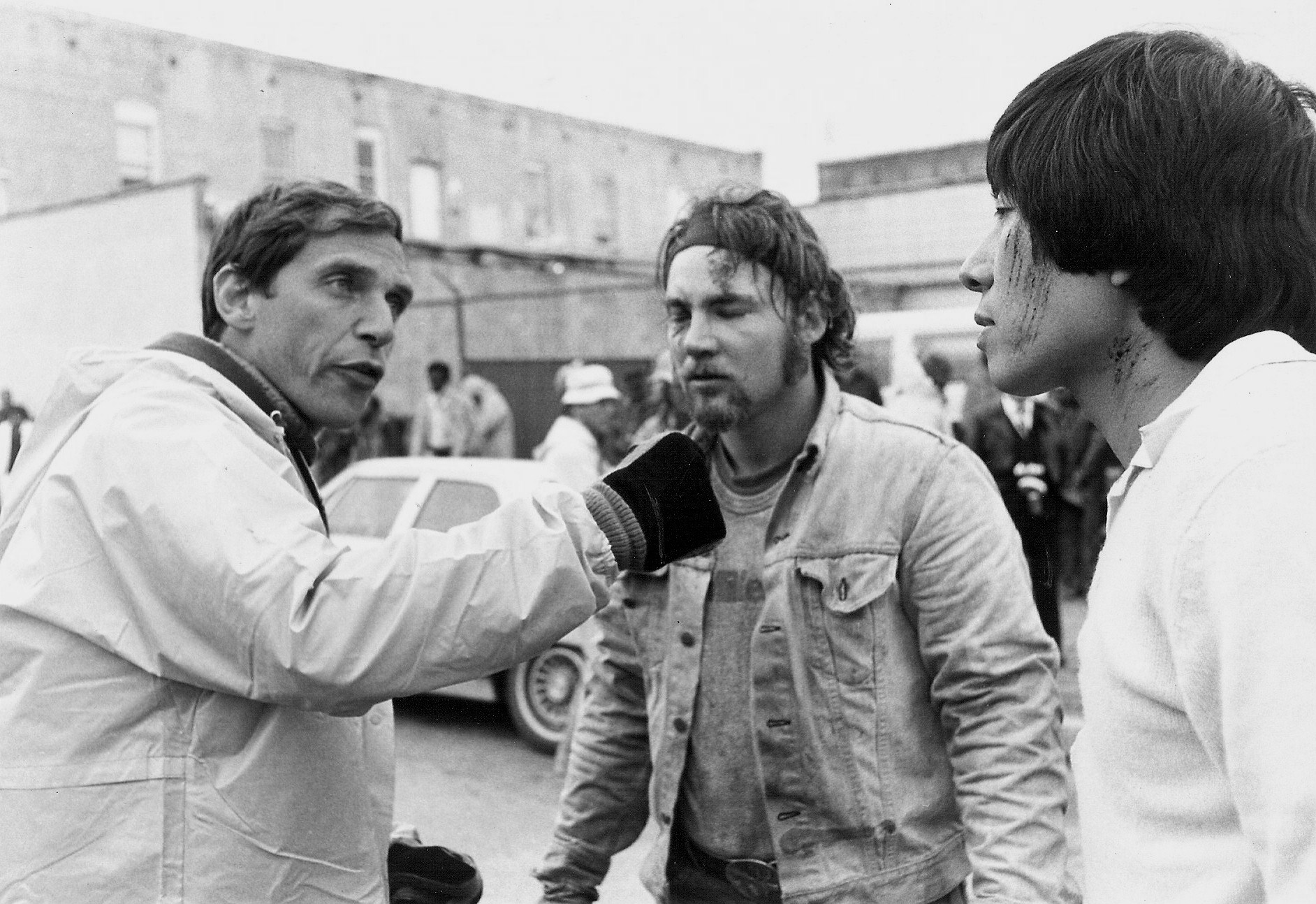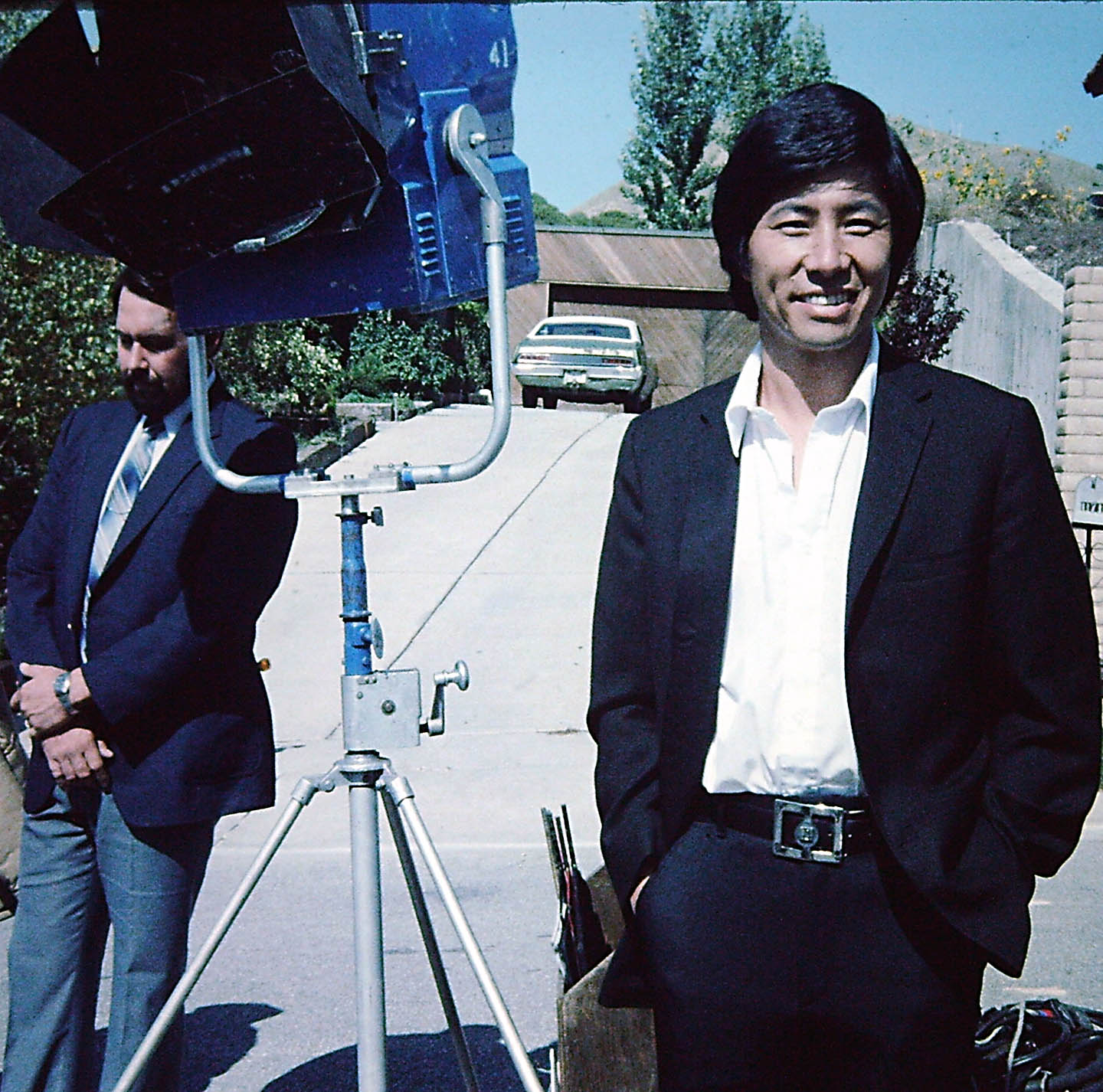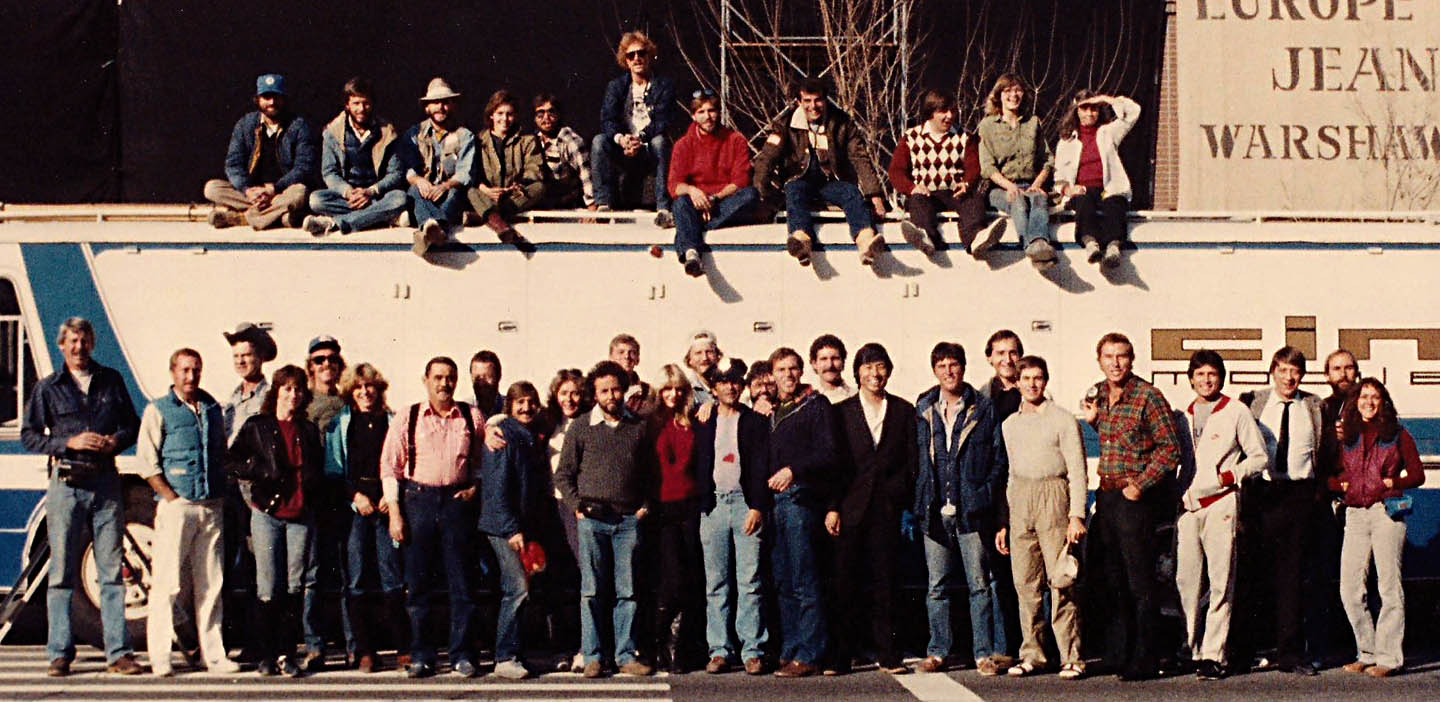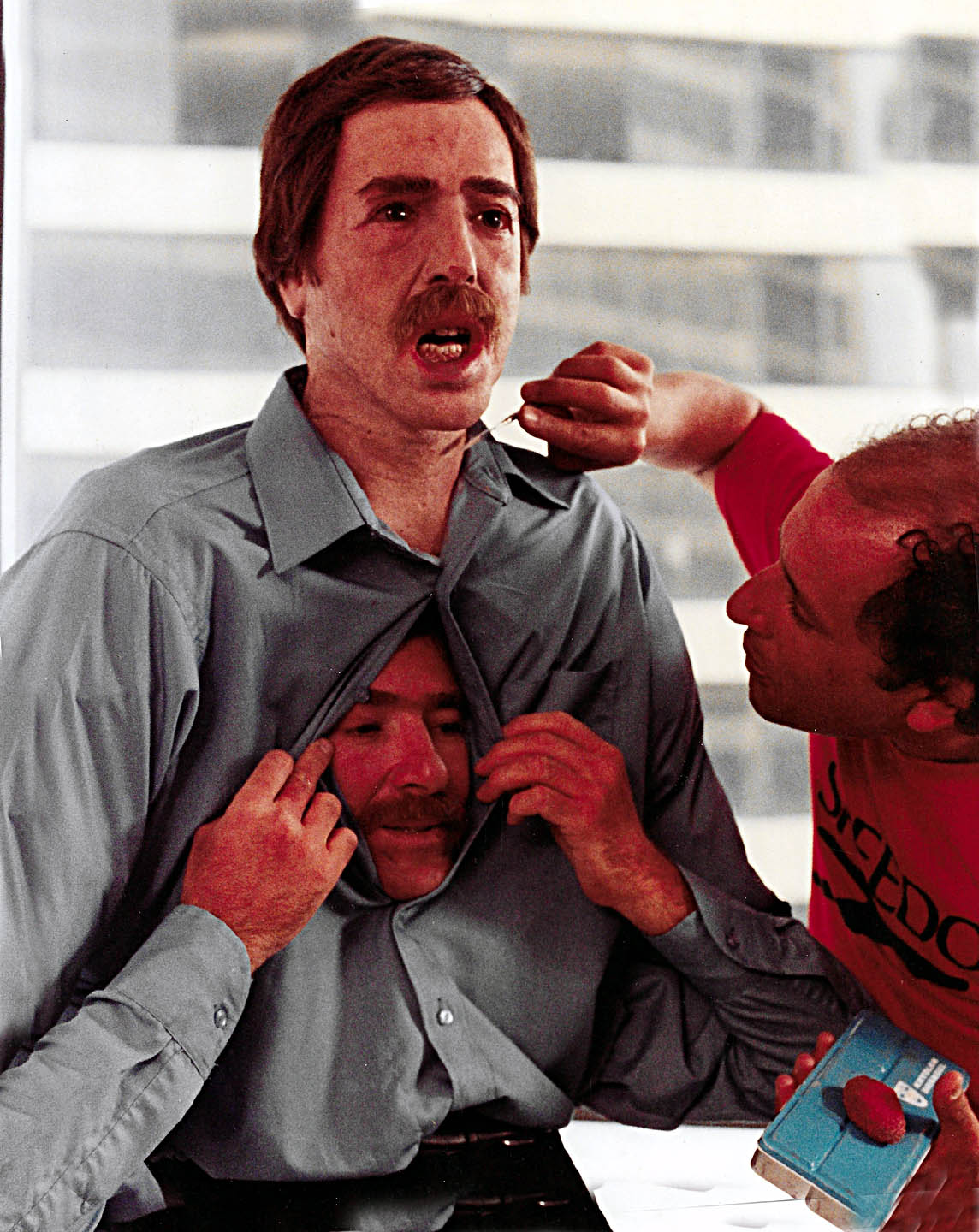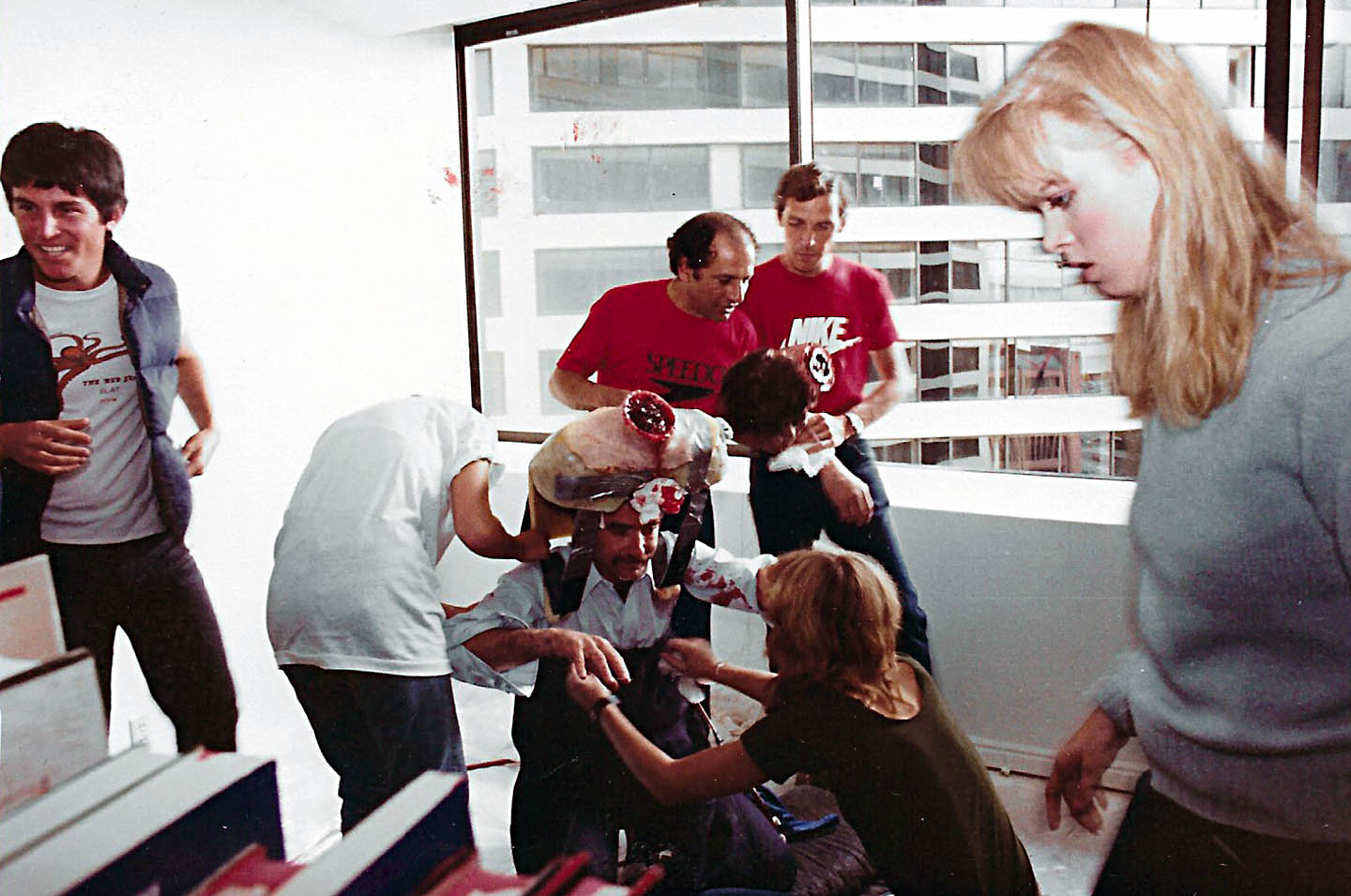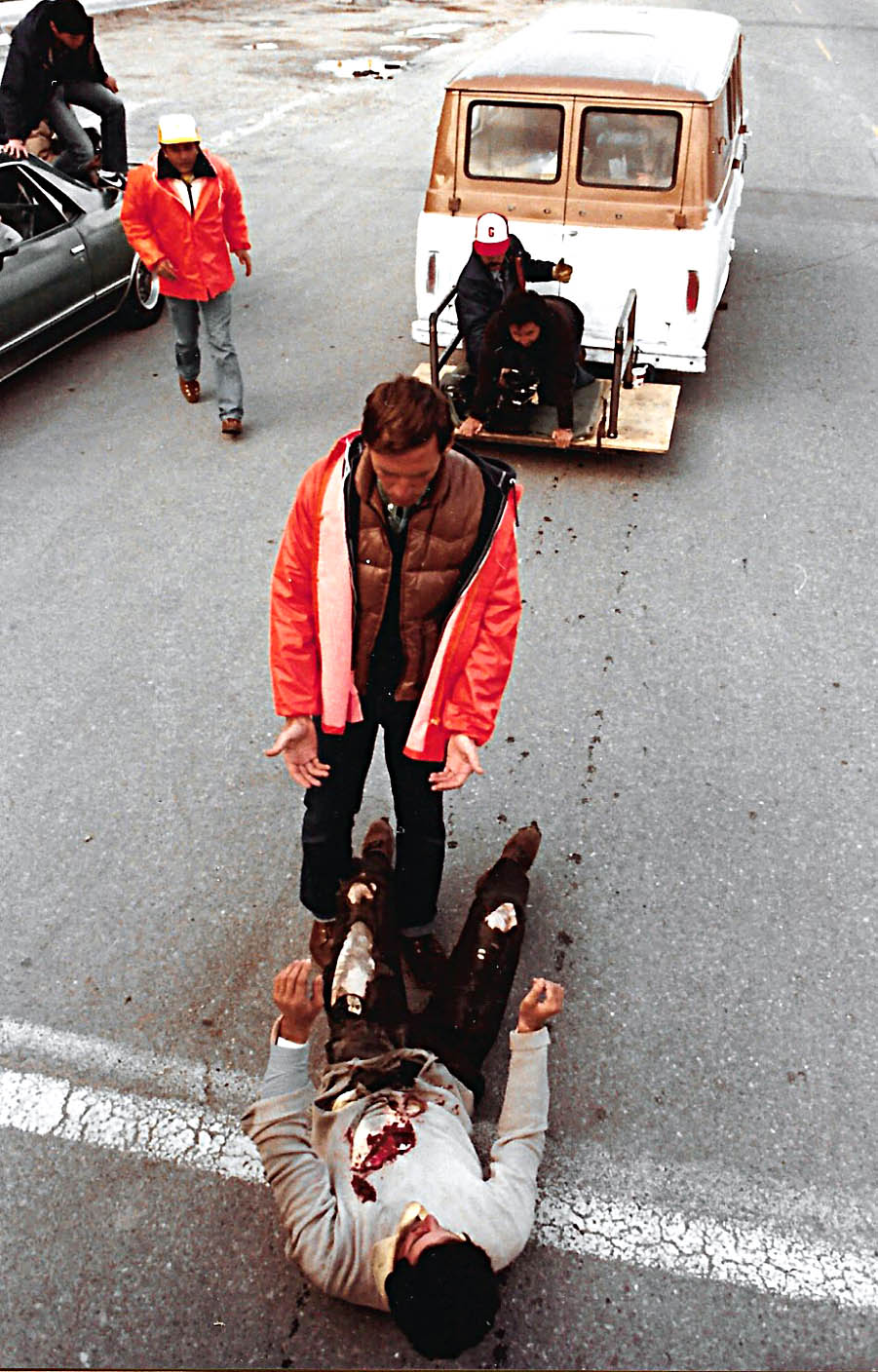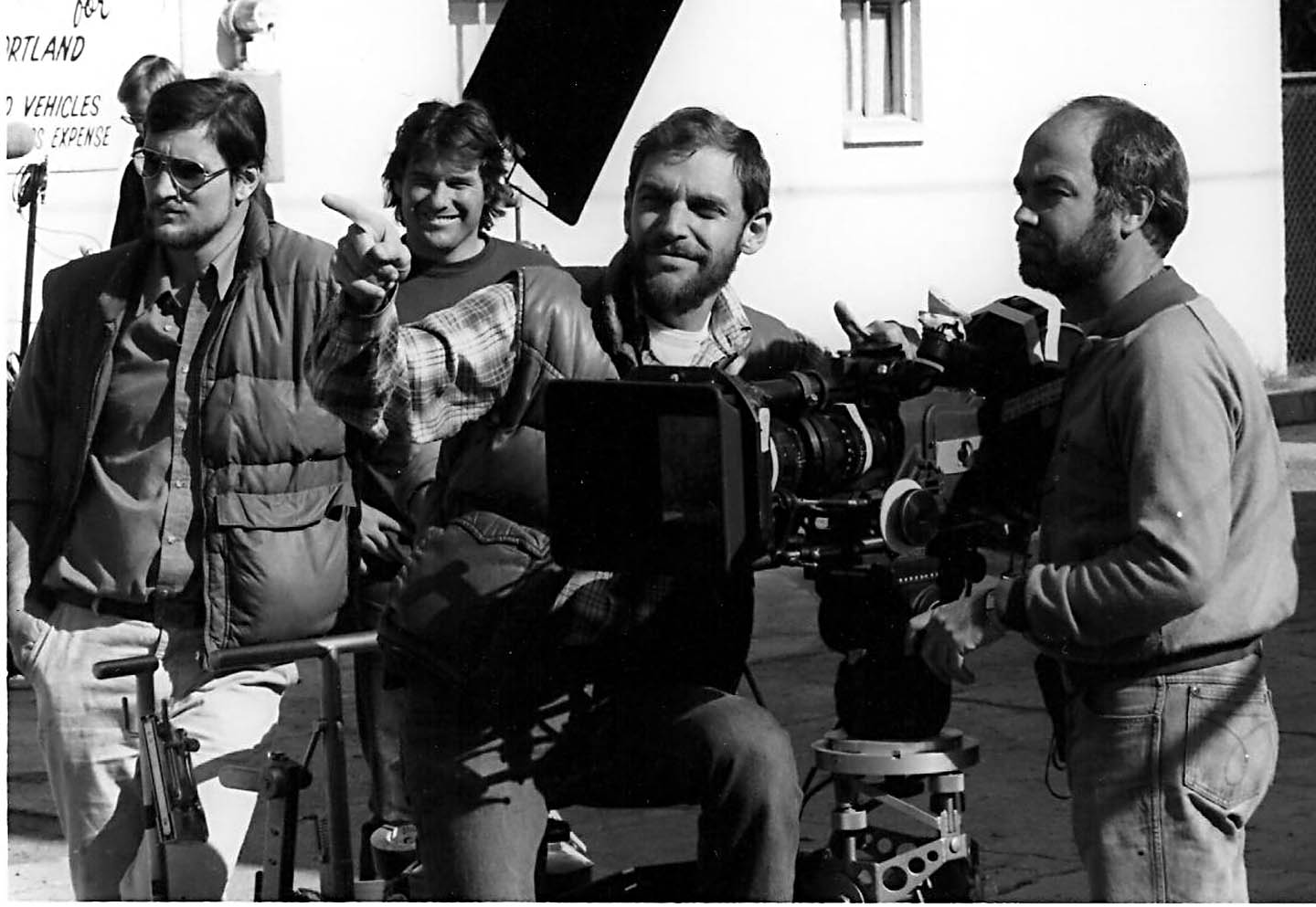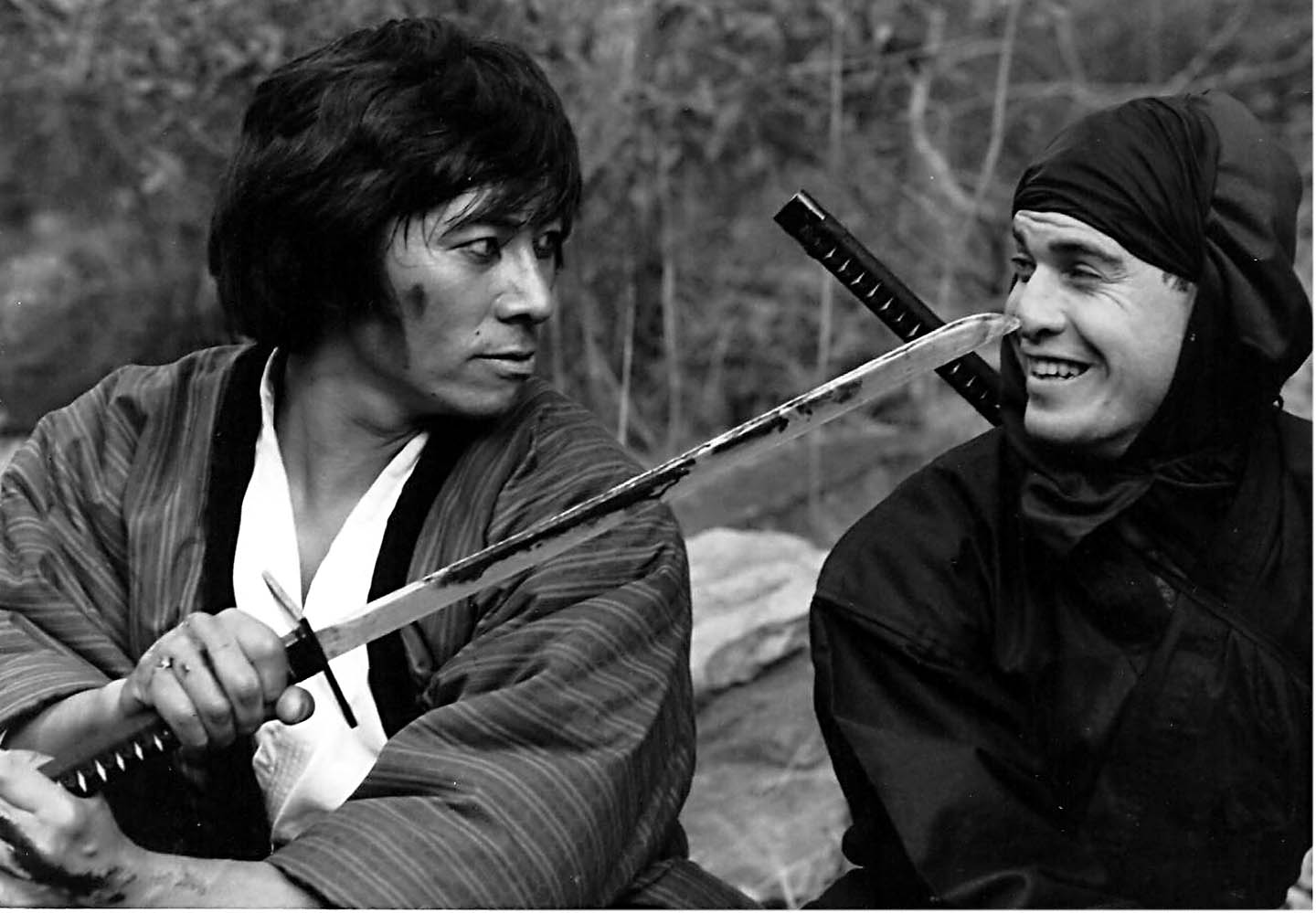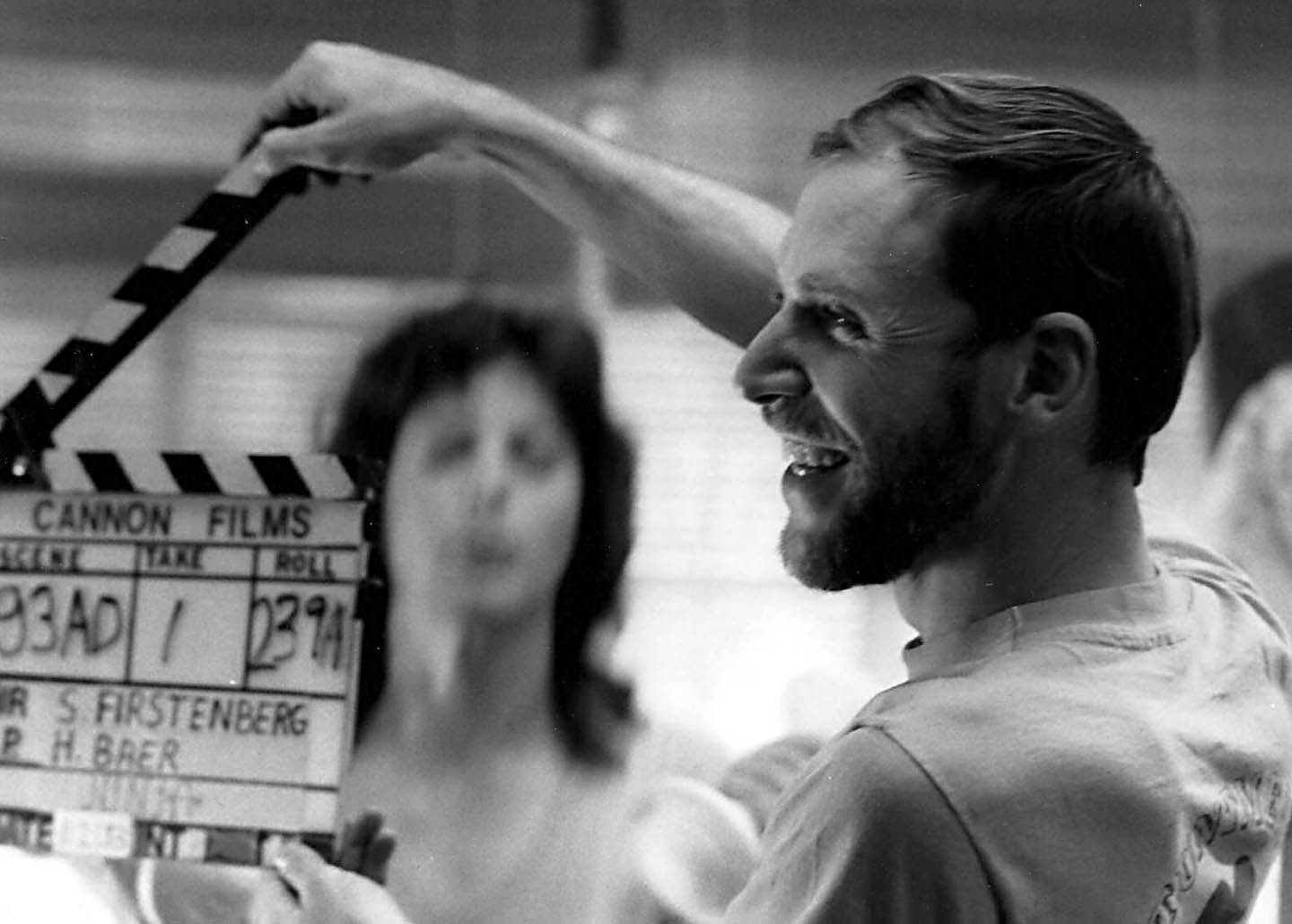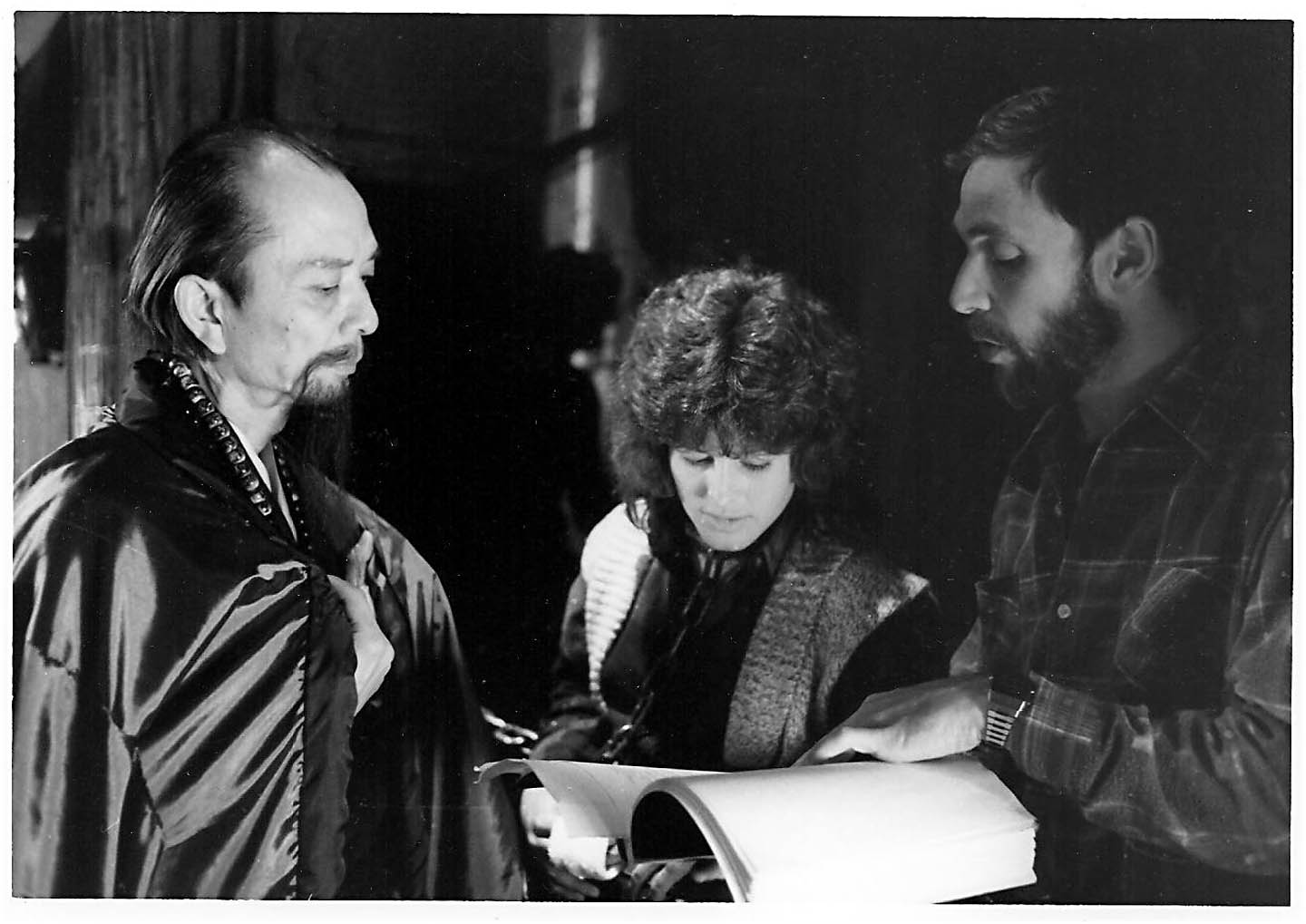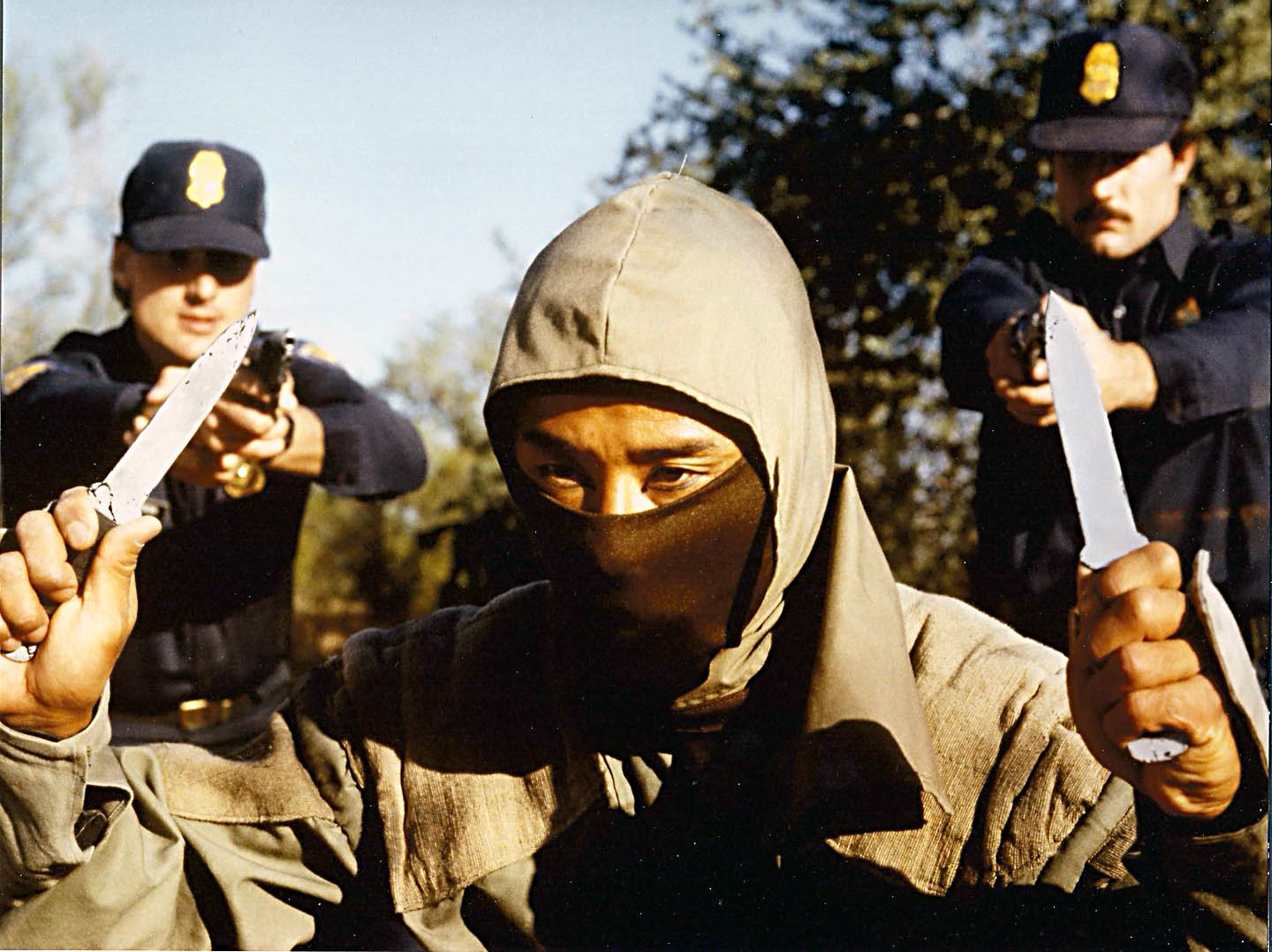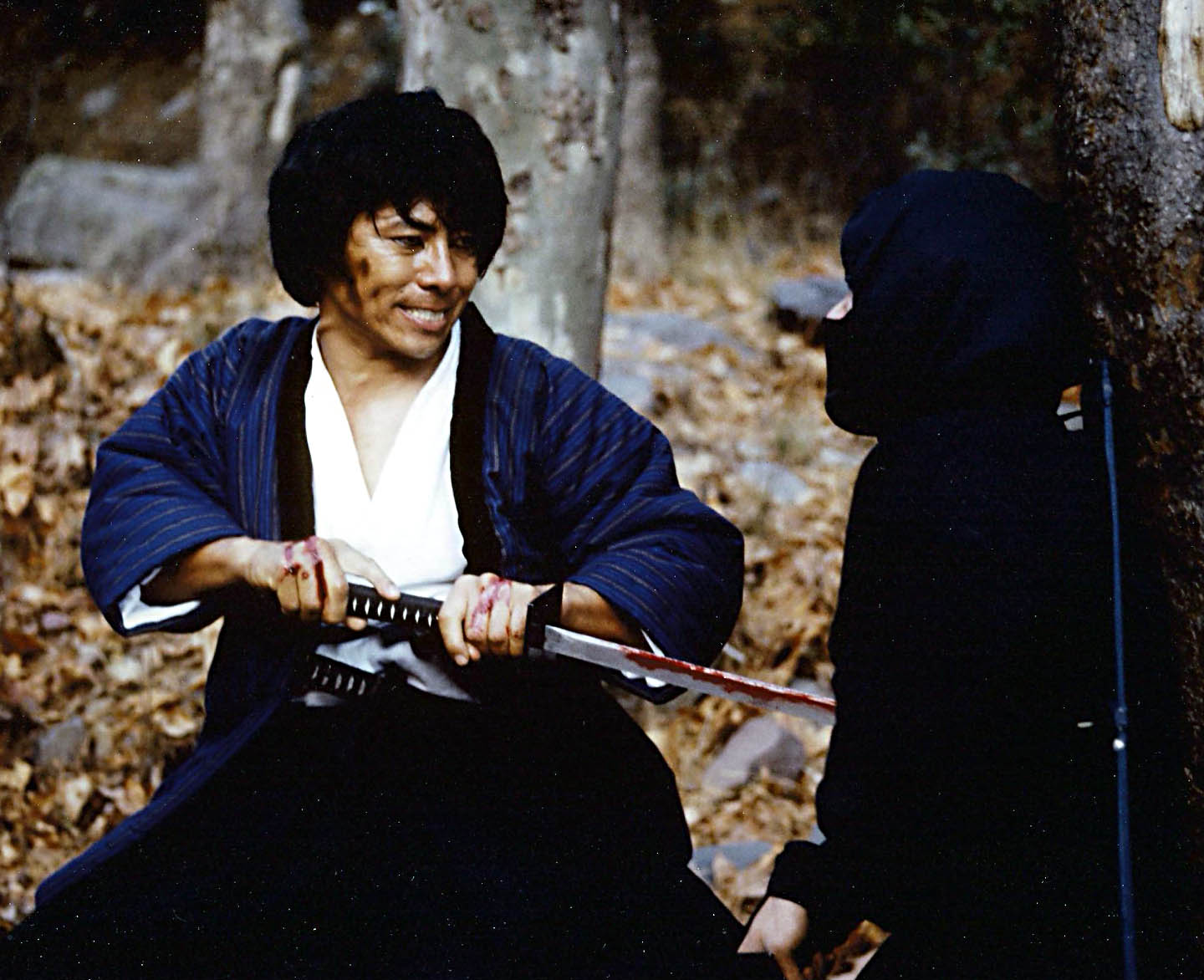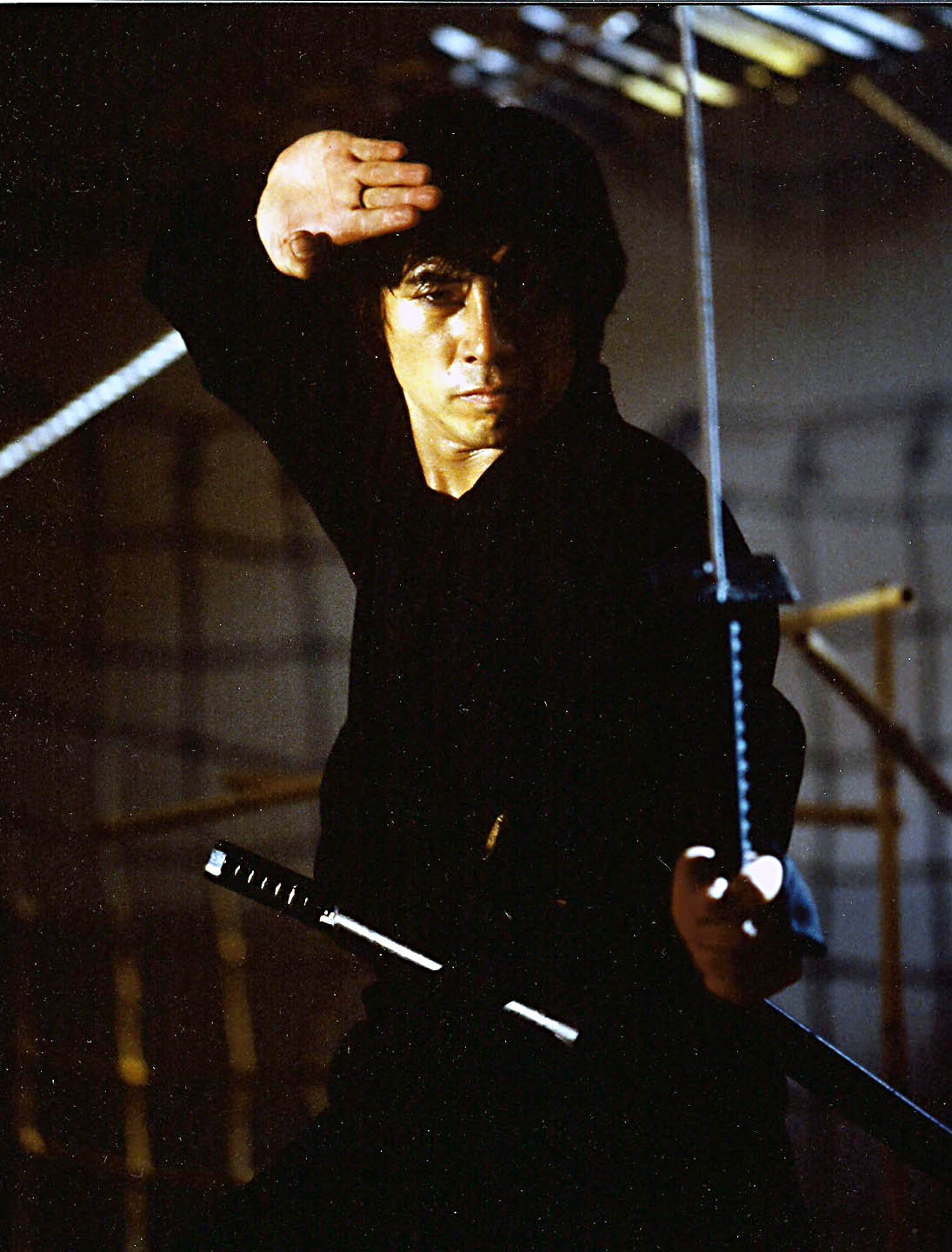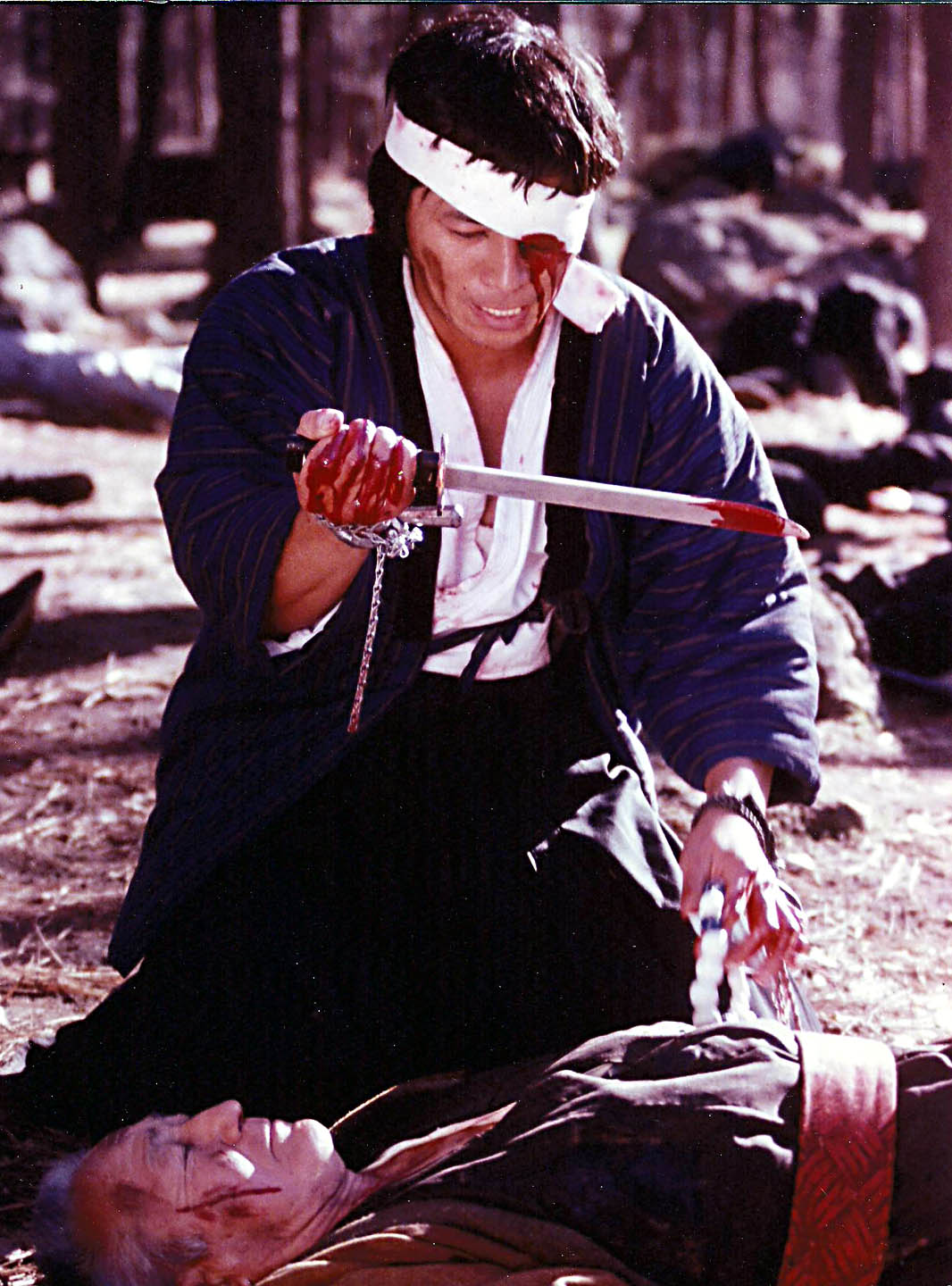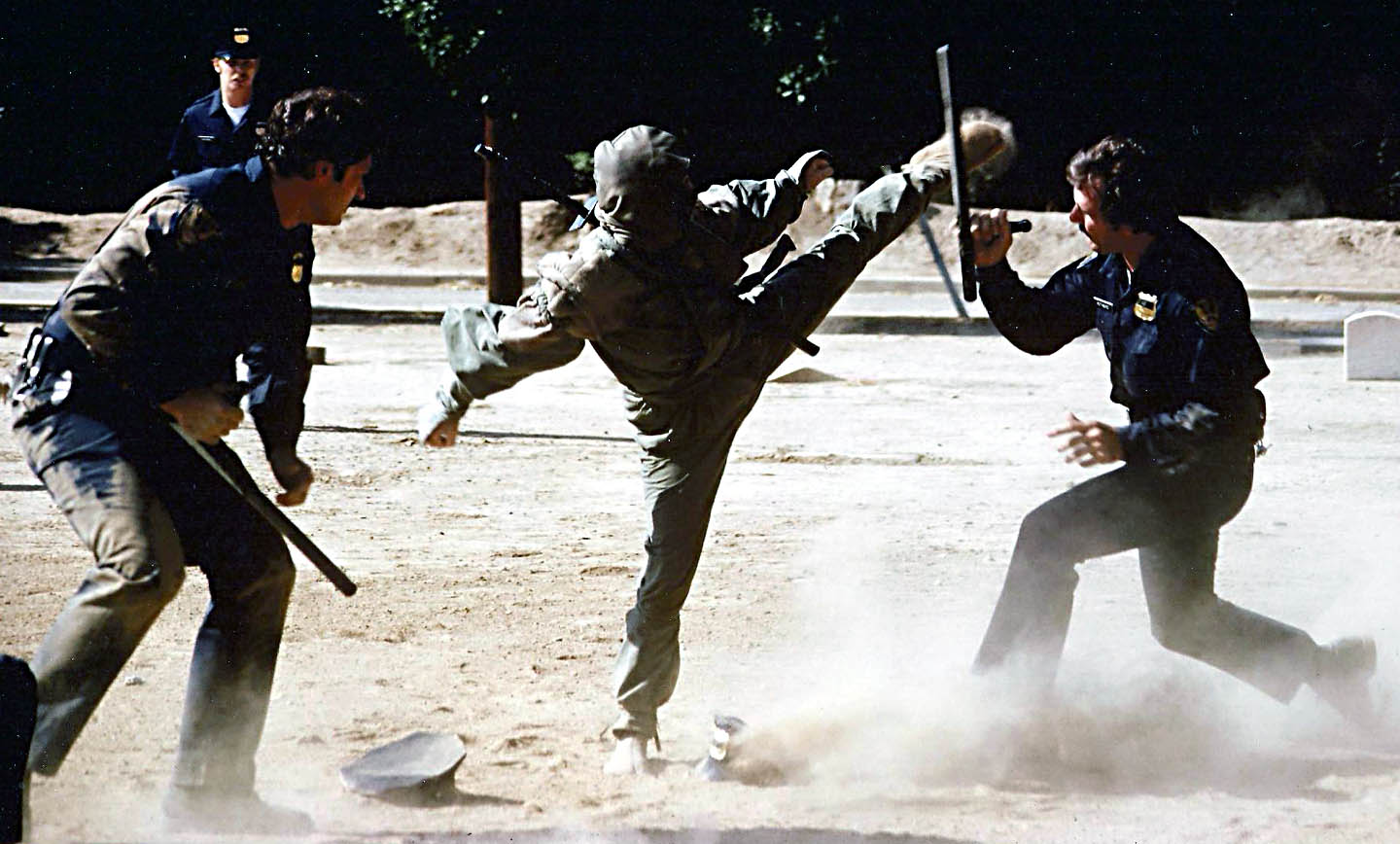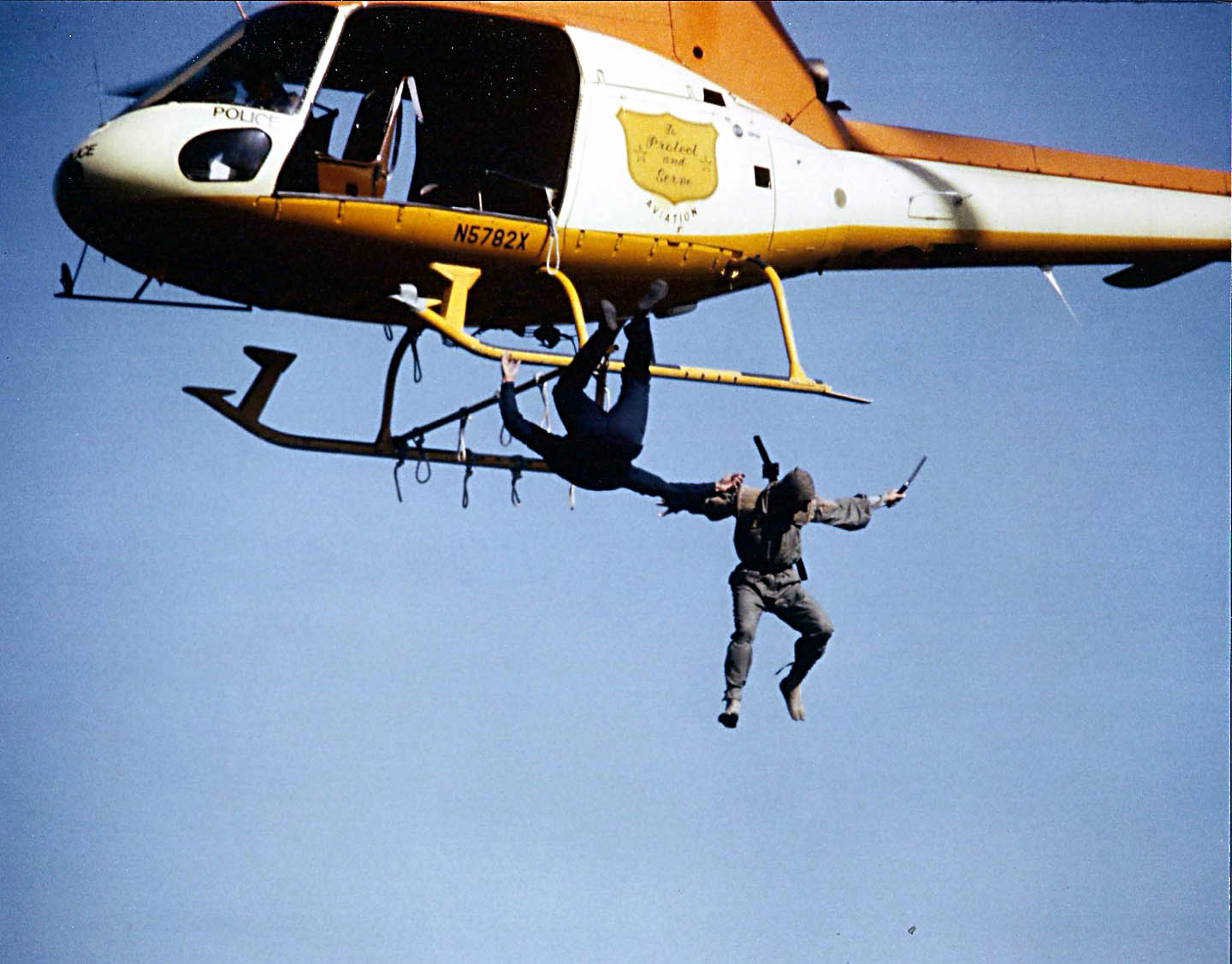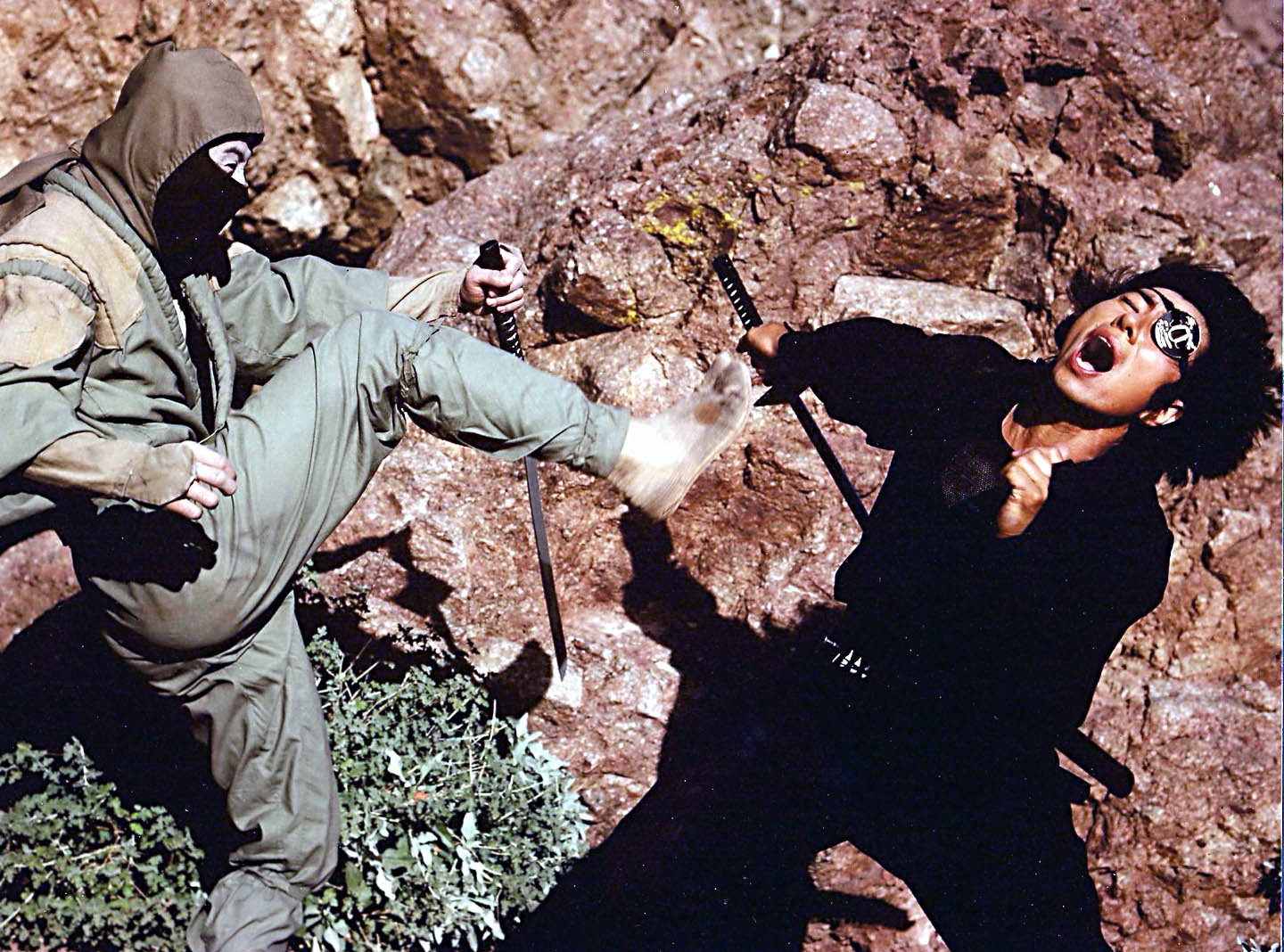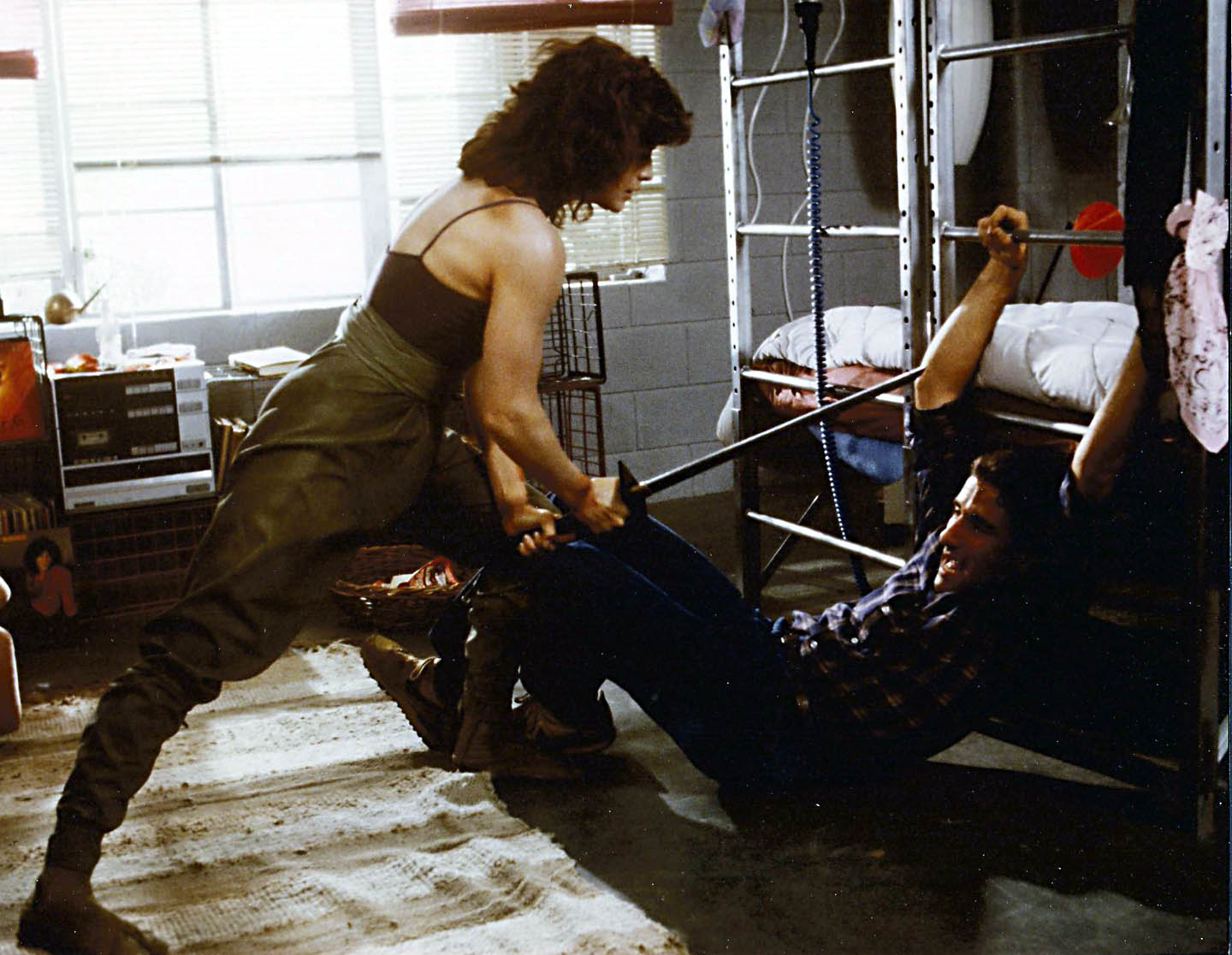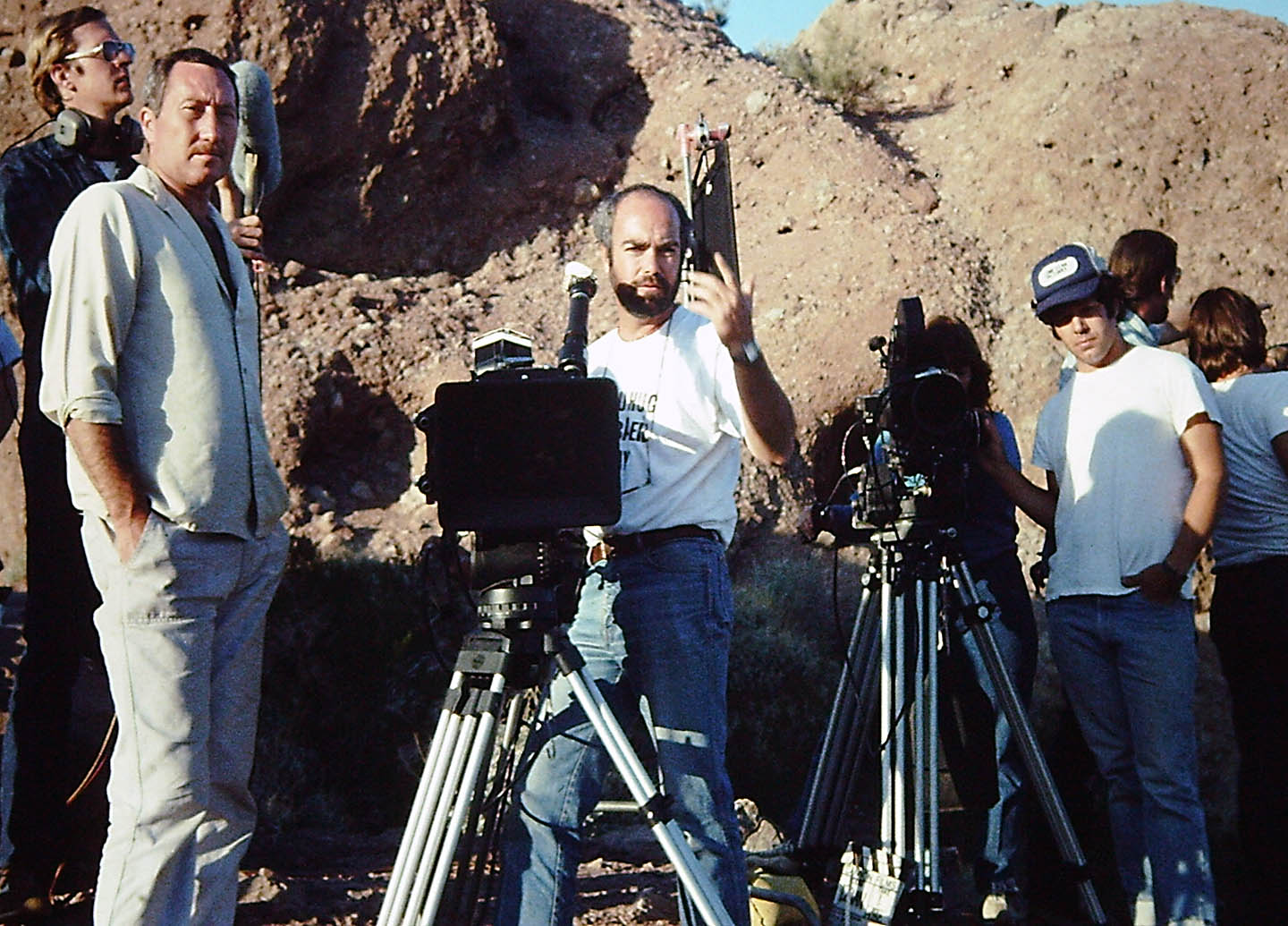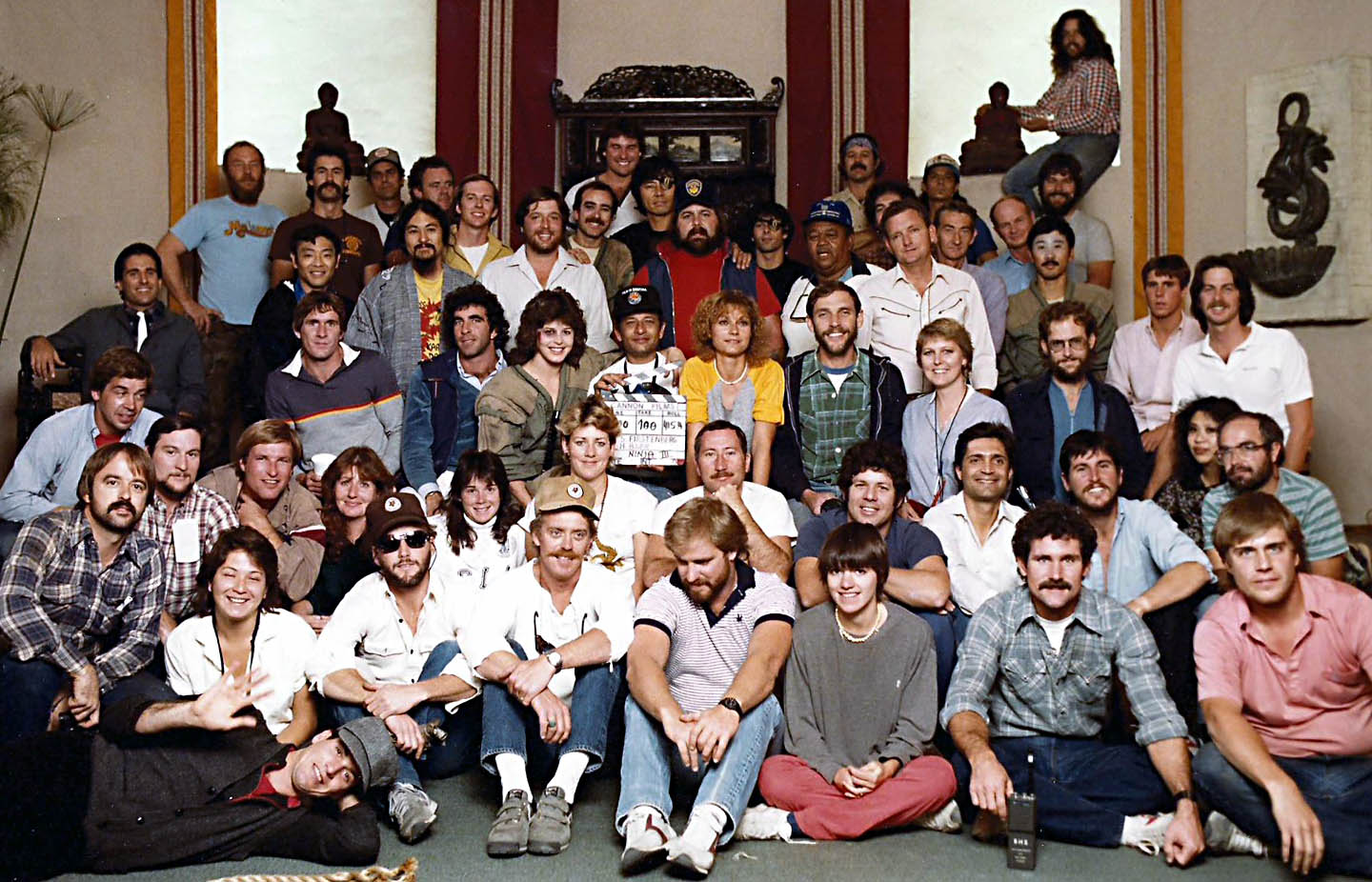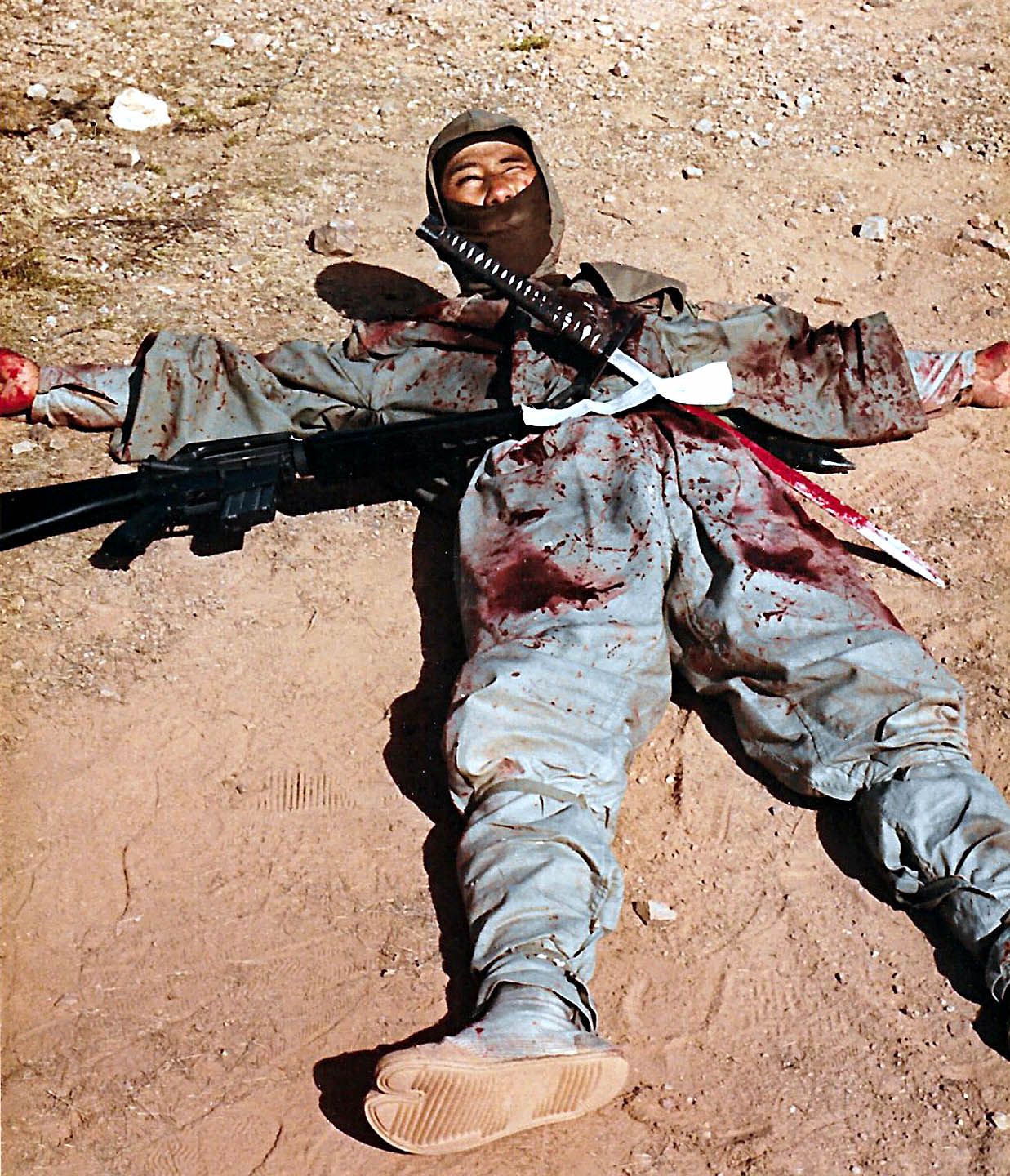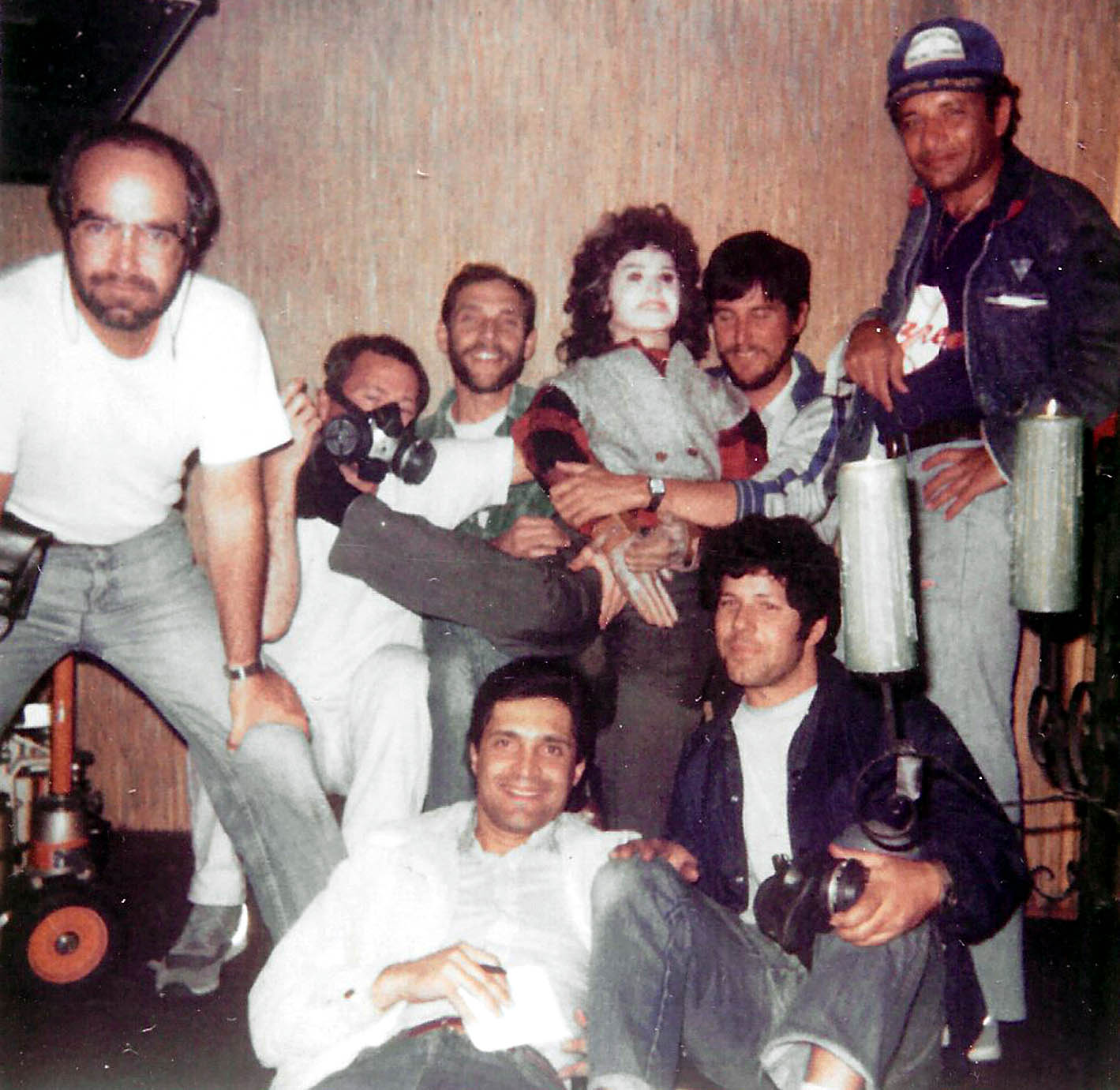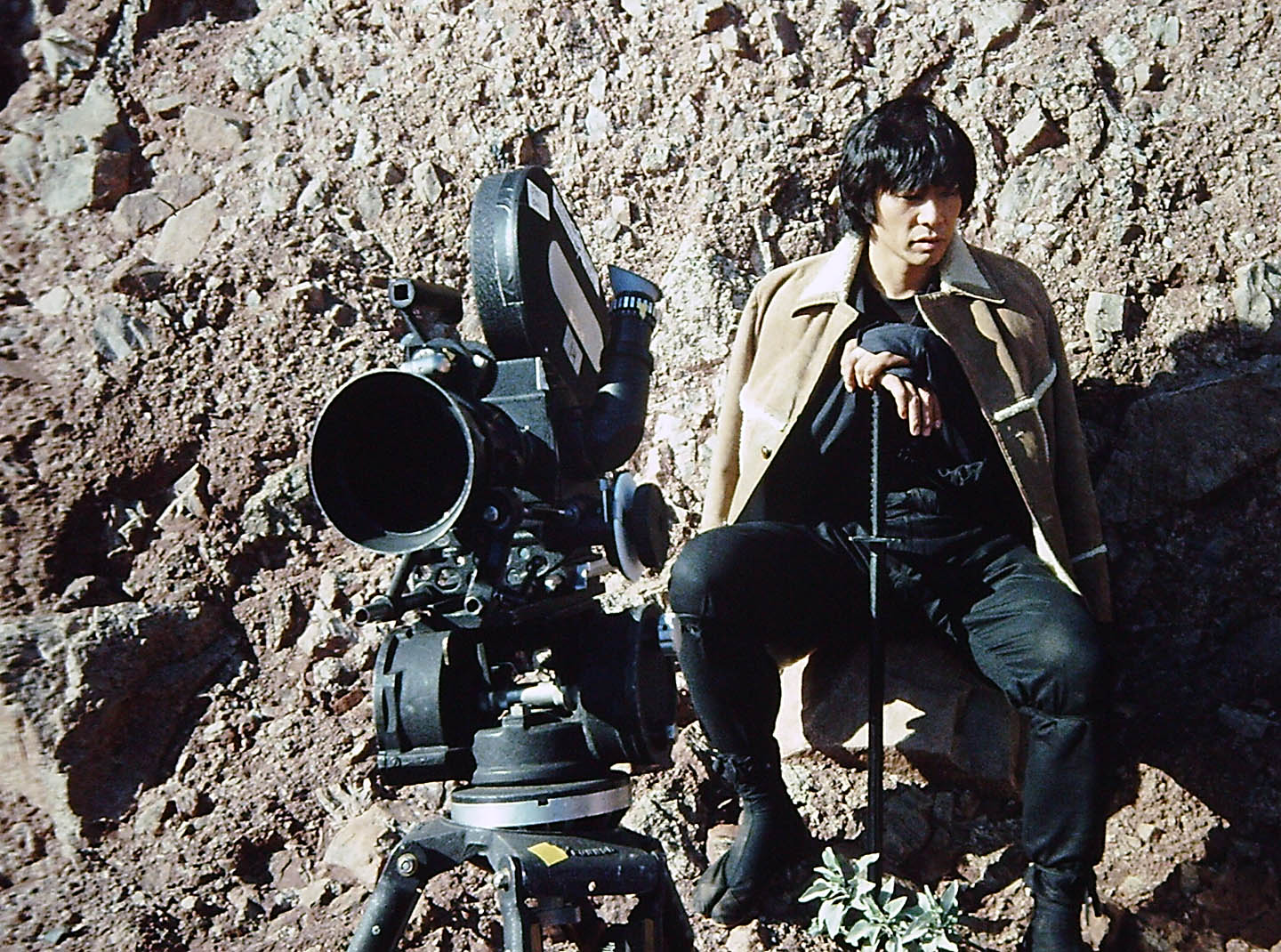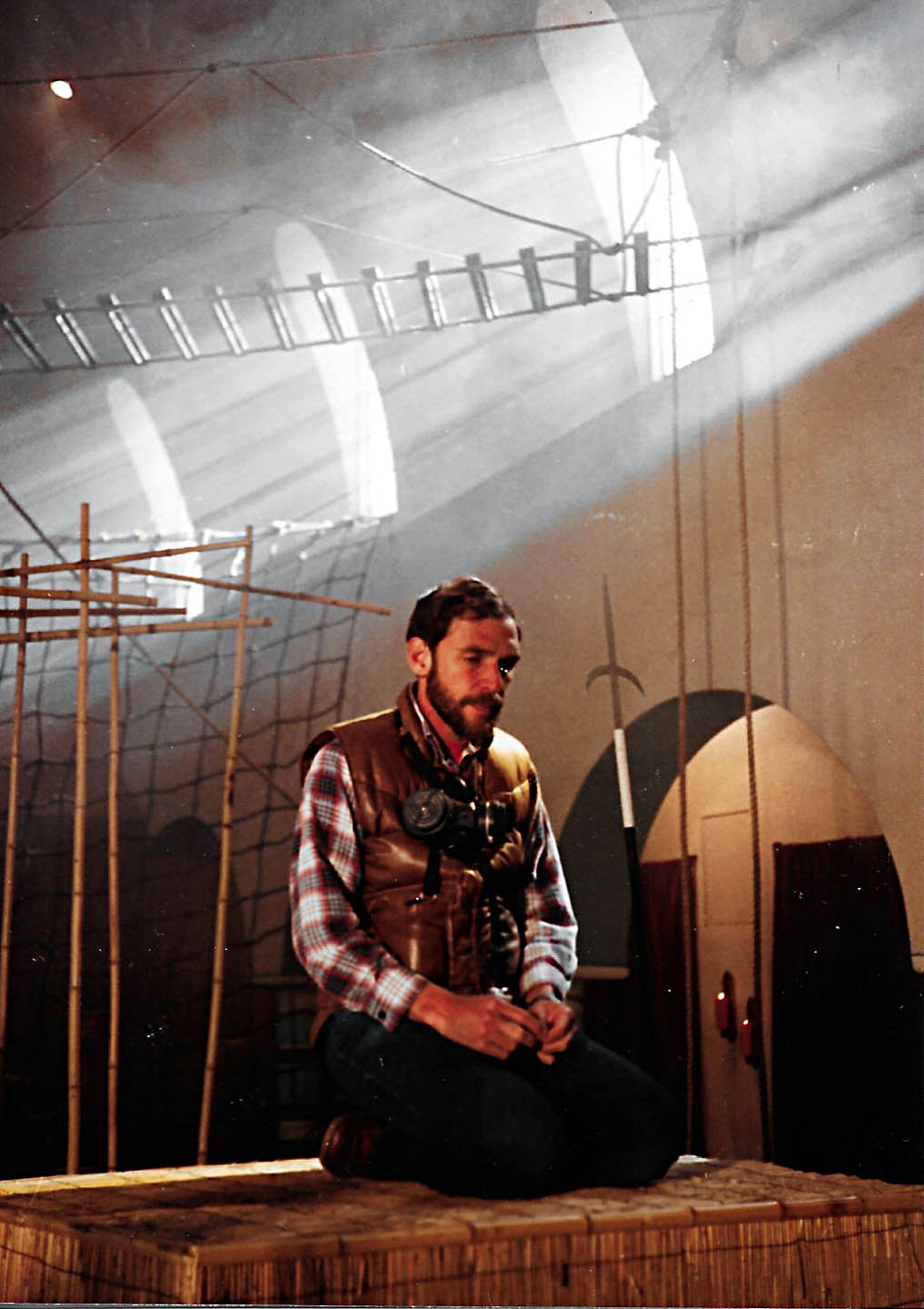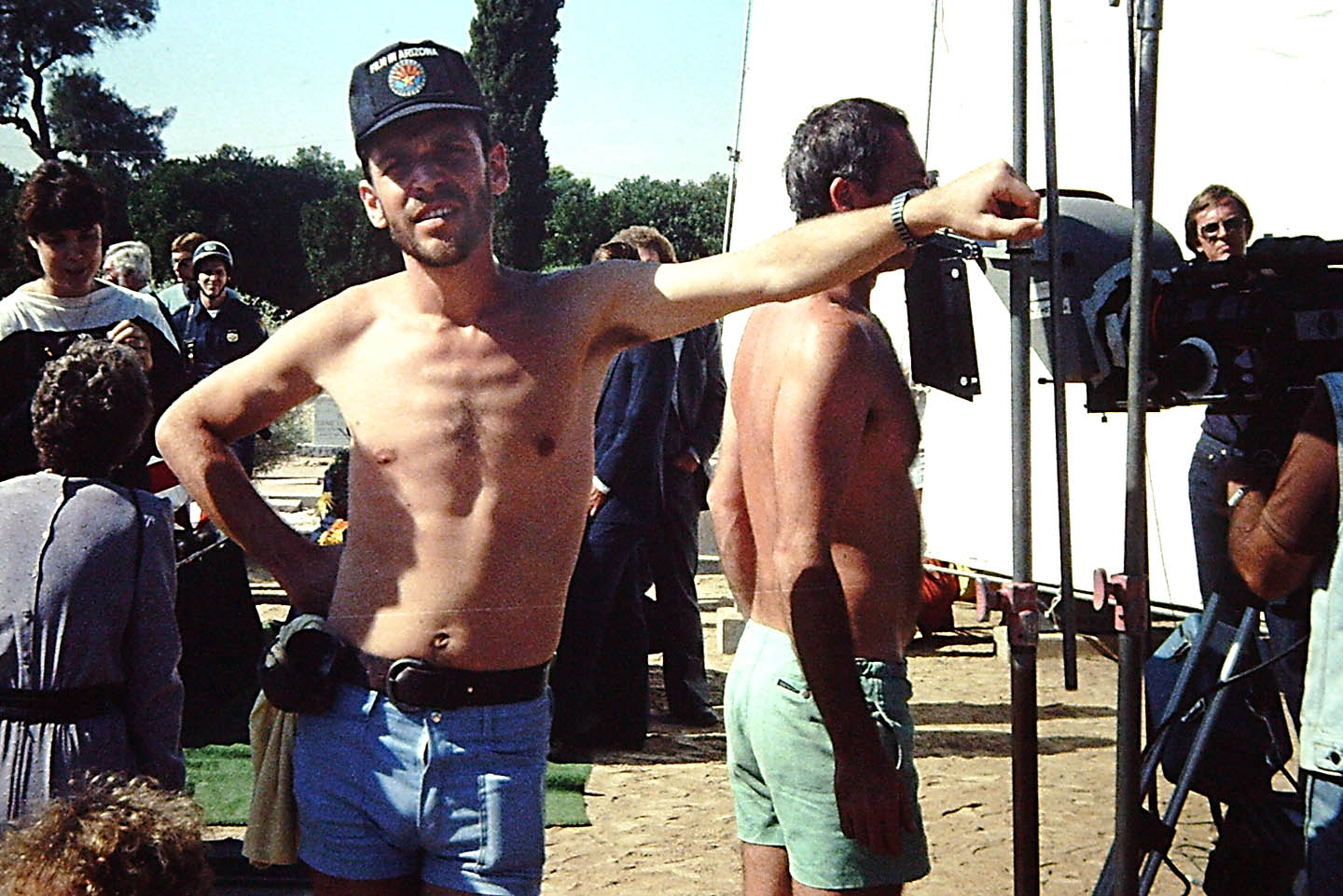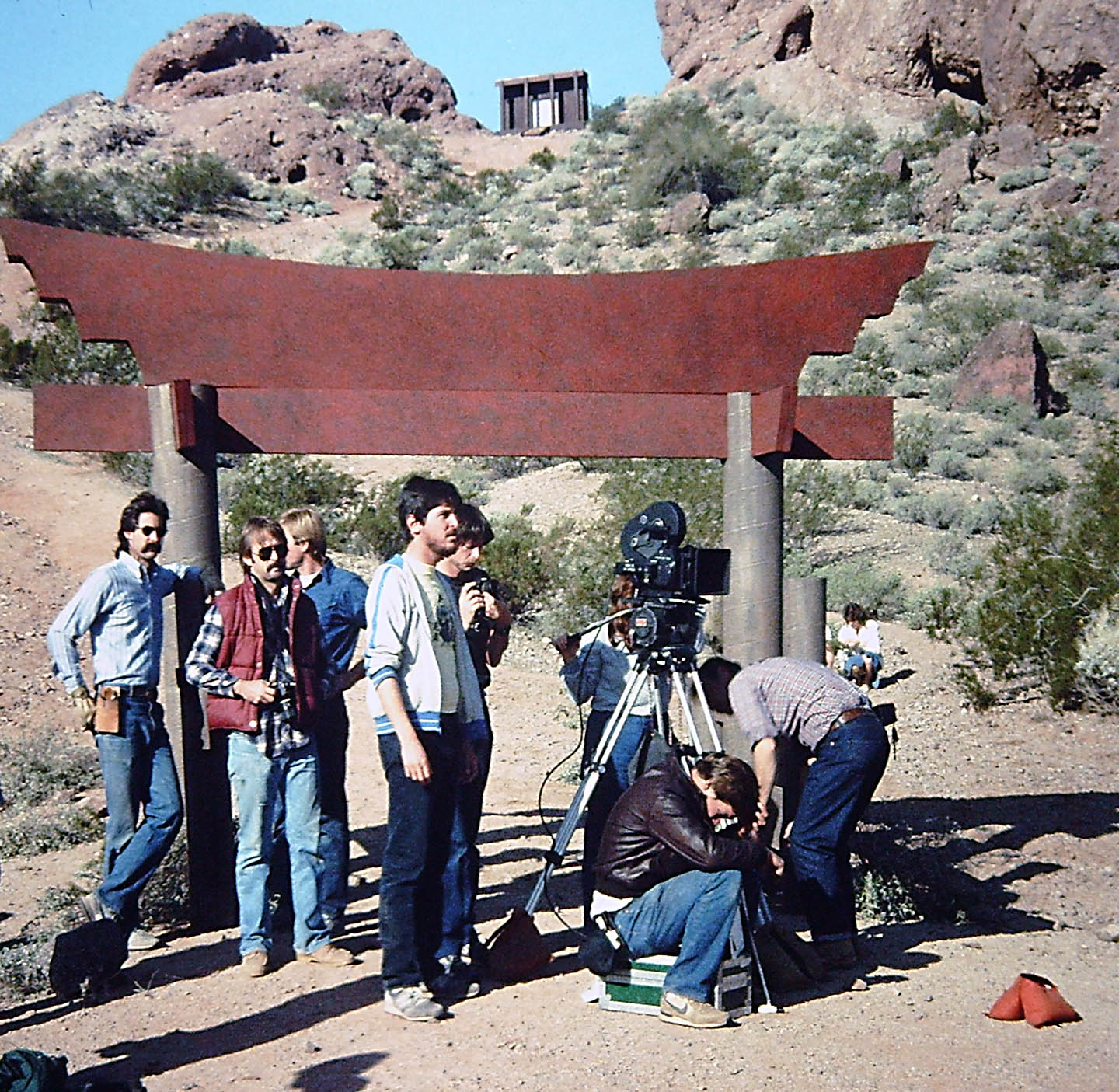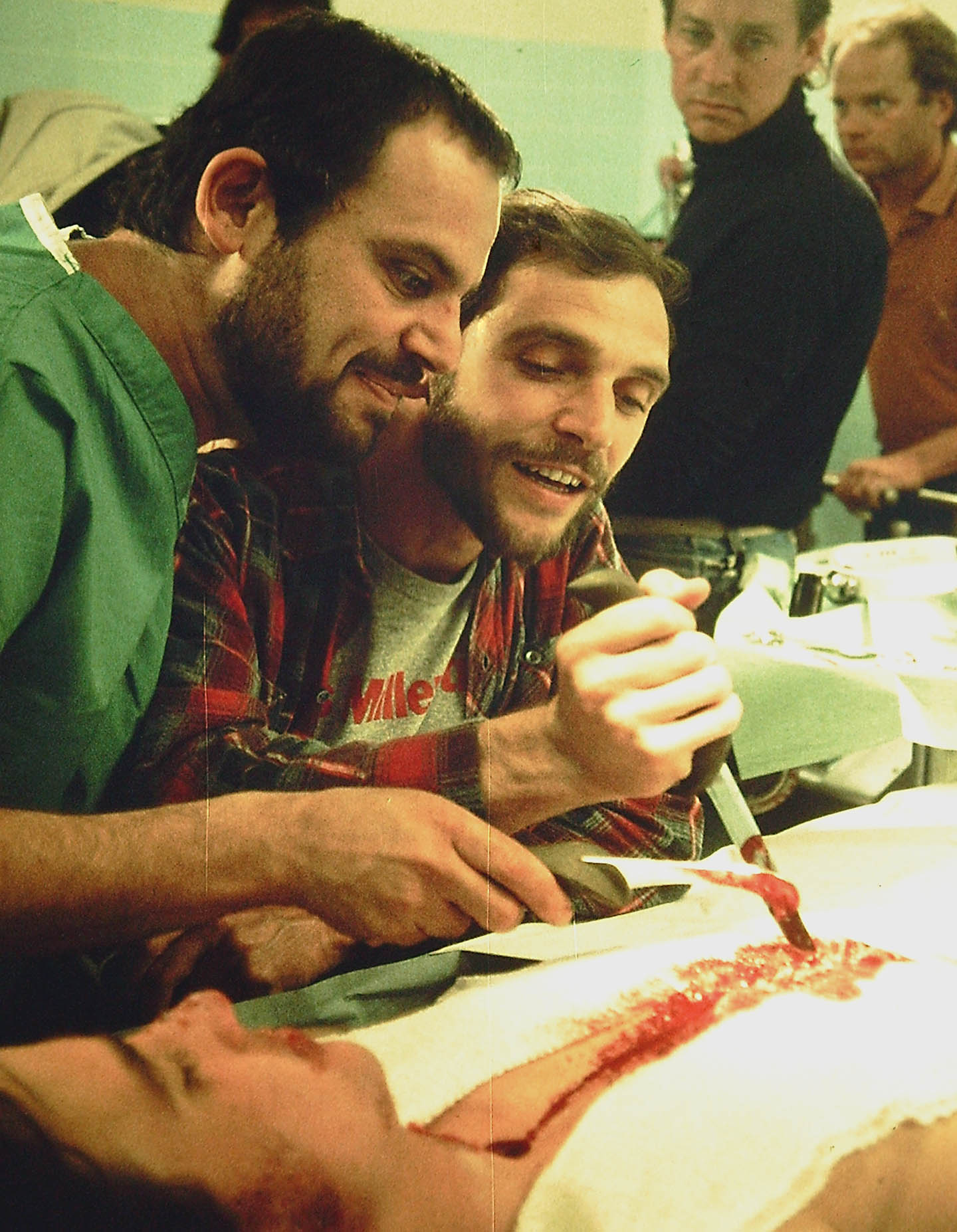How Did This Get Made: A Conversation With Sam Firstenberg, Director Of 'Ninja 3: The Domination'
This week, the gang at How Did This Get Made? covered Ninja 3: The Domination (1984), the final entry in Cannon Films' so-called "Ninja Trilogy" The director of Ninja 3, Sam Firstenberg, is an interesting guy with many stories about his unlikely journey from Jerusalem to Hollywood. So many, in fact, that we're going to save his tales about breaking into the business, working for Cannon in its heyday and directing the iconic cult classic Breakin' 2: Electric Boogaloo for a separate piece in the near future. Today, instead, we're just going to put on our most Sherlockholmesian deerstalker and investigate how did Ninja 3: The Domination got made. Which begins—a couple years earlier—with a film called Enter the Ninja. [AUTHOR'S NOTE: the interview below has been lightly edited for clarity]
PART 1: The Hollywood Way
SAM FIRSTENBERG: So [at that time, circa 1981] Cannon had small offices in Sunset Boulevard. And they were trying their hand at horror. Because the cheapest genre movies [to make] are horror. For example, a few of the first productions under the Cannon Group's "Golan-Globus" banner were the slasher films Schizoid (1980), New Year's Evil (1980) and Hospital Massacre (1981). SAM FIRSTENBERG: So they started with horror movies. But they didn't have a lot of success. But action, they understood. So one thing led to another and they produced a movie which was called Enter the Ninja. Menahem Golan directed this. There was a guy named Mike Stone—a famous martial artist—and he was involved with putting it together. They recruited the Italian actor Franco Nero to be the star of the movie, and there was a villain [played by] Sho Kosugi and they went to the Philippines and made the movie. And the movie had a moderate success.Enter the Ninja first opened in France and Germany in late summer 1981 and then eventually made its way to Los Angeles the following year. SAM FIRSTENBERG: Now remember this was an independent company, Cannon. And like every other small company, they really wanted to secure distribution from one of the major studios. It's called to "pick up"—to "pick up the movie"—and Cannon wanted their movies to get picked up from one of the major studios. Like Universal or Warner Bros. or MGM. But it's not an easy task. BJH: Right, of course. Getting distribution is tough. SAM FIRSTENBERG: Yes. Because those companies are asking for a certain level of quality before they're willing to pick up a movie. They will not pick up very cheap-looking movies.BJH: So was Cannon able to get distribution for Enter the Ninja? SAM FIRSTENBERG: No. They were struggling. So Cannon would distribute their own movies throughout the country; and internationally; and also on video (it was the beginning of cassette era). And [with Enter the Ninja], Cannon had a moderate success. But they were struggling. BJH: Right. SAM FIRSTENBERG: Also: at this time, no one in the western world knew this word "Ninja." There were some martial arts movies [that got distribution in the United States] but not ninja movies. There were "kung fu" movies, but no ninja movies. And besides, the whole concept was crazy anyway because the "ninja" is a negative character in the Japanese/Samurai mythology. They were the assassins of the Shoguns. They were not the positive character. And suddenly, here—we and Cannon and Golan—we took the "ninja" and made them the hero; the good guy; the protagonist! Anyway, so Enter the Ninja went out in the market and had a moderate success. The company said: okay, we are doing better in action than we are doing in horror. So what do we do? Immediately: sequel! This is the Hollywood way. BJH: Ha! SAM FIRSTENBERG: For the sequel, Cannon thought Franco Nero was not the right actor, but they were very impressed with Sho Kosugi [who had played the foil to Nero]. So they decided to make a movie with him. With Sho Kosugi. And they called it Revenge of the Ninja. There was a writer, Jim Silke, and he started work on the scriptBJH: Okay. And at what point did you get involved? SAM FIRSTENBERG: This is really...it's funny because this is almost the truth: I was back from Switzerland—from the Locarno film festival [where Firstenberg had gone to screen his first film, One More Chance]—and boom I run into Menahem Golan in the corridors [at Cannon]. He said, "Sam! Can you direct action?" BJH: Ha! SAM FIRSTENBERG: What happened was: [after directing Enter the Ninja] Menahem Golan didn't want to do it again. He was already busy with the company—with Cannon films—and the company was growing. And he was the head of the company. So for whatever reason, he didn't want to go and direct another movie like this. BJH: Gotcha. SAM FIRSTENBERG: At this point, I had proven that I can at least direct a movie: beginning, middle and end. So he asks, "Will you direct this Revenge of the Ninja for me?" What a question! I'm a young, aspiring director. So I say, "Sure!" But Menahem Golan said, "There is one problem: this is an action movie. Can you do action?" And my answer is, "Of course I can do action!" But I didn't have a clue how to do action!
PART 2: “And this was how, suddenly, I found myself a director of action movies.”
SAM FIRSTENBERG: I mean, I'd worked on some action movies in the past but not as director. But I said, "Of course! No problem. I will do it." So they put me together with the writer, Jim Silke, and Sho Kosugi. Sho Kosugi was already in the deal. BJH: So what did you do at this point? How did you learn what you needed to learn in order to direct an action movie? SAM FIRSTENBERG: First, I saw this first movie, Enter the Ninja, and I got the idea of what this is. Then I met Sho Kosugi and let me tell you: up to this point, I never saw a Hong Kong movie or martial arts movie in my life. Never ever...but I had seen a lot of samurai movies. I loved samurai movies. I loved Japanese samurai movies...so that was an inspiration for me. And then I went to Sho Kosugi and he took me under his wing in this subject of martial arts. And he started to show me Hong Kong movies. He showed me what this means and what kind of spectacular action was in this cinema. Clever action. And he also taught me about the ninja subject—about "ninjutsu." He recommended a few books. So I bought the books, I read the books. BJH: Okay, makes sense. Sounds like a good start. SAM FIRSTENBERG: And in the meantime, Jim Silke is writing the script. So I decide to do a storyboard. [almost as an aside] You know, I had two degrees from two films schools at this point! And I had my experience as an Assistant Director. So I knew something about making movies. BJH: Ha!SAM FIRSTENBERG: I'm a cinematic storyteller. That's not a big problem. And I am working with Sho Kosugi, who in addition to being the star he was also the choreographer for the fights; and I was introduced to stunt coordinator Steve Lambert. So I talked to all of them and I started to build the storyboard—every fight sequence, every action sequence in the movie. Then in May 1981, production of Revenge of the Ninja began. SAM FIRSTENBERG: It was decided we'd go to Salt Lake City to do the film. For financial reasons. And so we went there. It was not a tiny movie. It was not a small movie. Eight weeks shooting in Salt Lake City. Two units. And I was away from the office, didn't have to deal with any pressure from the studio. I had some good people around me and together we put together this movie. BJH: That's great.
SAM FIRSTENBERG: Now, you know, movies really come to life in the editing room. So importantly, I had a very good editor: Michael Duthie. He [had] edited the first movie, Enter the Ninja, and he's a really good editor for action. From him I learned a lot. He helped me improve my skills for directing action. Anyway, after eight weeks we finished. We came back and edited the movie. I was sitting with him—with Michael Duthie—and we realized there were some problems. So Cannon gave us an extra week of additional [filming]. So all in all, nine weeks of shooting with six day weeks. That's a nice schedule. It's not a major movie schedule, but not bad. And then the movie was completed. BJH: Amazing. Your first action movie! Then what? SAM FIRSTENBERG: So I told you: Cannon was always hoping to get distribution for their movies. So they showed the movie to the studios—hoping to get distribution—and MGM called and said, "We are picking up Revenge of the Ninja." This was a BIG deal at Cannon. It's hard to describe...but for an independent small company, this was a big deal.BJH: I can imagine! That's a huge accomplishment. And—if you remember—what did MGM say. What did they like about Revenge of the Ninja? Why did they want to pick up this movie? SAM FIRSTENBERG: So, you know, of course no one disclosed to me the reasons. [laughs] But they saw financial potential—money-making potential in the movie. And they were right! They took the movie, did not change anything. Of course we did the sound mix at MGM, but they didn't change anything about the picture. And they started with a nice campaign. There is a famous poster—hand-painted—with Sho Kosugi flying against a red sky background. SAM FIRSTENBERG: They opened the movie on 80 screens. And [back then] there was a system of distribution called "East of the Mississippi" and "West of the Mississippi." So the movie played at 80 screens in the eastern part of the United States ["East of the Mississippi"], and then after it was done they'd send those 80 prints across the United States ["West of the Mississippi"]. Because each print cost a lot of money. Even at that time, each print cost about $1,000. BJH: Right. SAM FIRSTENBERG: So Revenge of the Ninja opens in New York. And right away—the first week!—it was at the top of the charts. It was number one! BJH: Really? Wow. SAM FIRSTENBERG: Yeah. It was number one in New York city for two weeks. So now MGM was very excited...and Cannon was very excited. And that was the start of the relationship between Cannon and MGM. Later, MGM distributed a lot of Cannon movies. This was how, suddenly, I found myself a director of action movies.
PART 3: Domination, X-Ratings and Menahem Golan’s 95-minute Rule
BJH: So you've just directed your first action movie and it's a hit. An unexpected hit! How do you go from that to directing Ninja 3: The Domination? SAM FIRSTENBERG: So as I said: suddenly, they have a financial success. And, of course, they want to do a sequel immediately. So Menahem Golan calls me in and says, "We are going to make a sequel. But I don't want Sho Kosugi as the star anymore." BJH: Wait. Really? Why?SAM FIRSTENBERG: I don't know why. I still don't know why. I don't know if it was something personal between them. Or if it was a marketing decision. [In general] Menahem Golan was moving toward American-izng [Cannon's films]. I think so, but I don't know. I can only speculate. BJH: Gotcha. SAM FIRSTENBERG: So Menahem Golan came up with the idea: why don't we make [our third ninja movie] with a female ninja—with an actress? I said, "Okay, that's a good challenge. I'm your director. [This movie] is not my personal statement." It's a craft and I do whatever needs to be done. Like in the golden age of Hollywood, the director had very little to say about a movie. And again, Jim Silke [would be writing the third ninja movie], the same writer [as Revenge of the Ninja]. Anyway...Sho Kosugi was infuriated. He was devastated. He didn't understand why, suddenly, he is not the star after such a successful movie. And he felt that a woman taking his place—a woman ninja—was unheard of. So Sho Kosugi was seriously against [taking a backseat to Lucinda Dickey]. There were arguments and fighting. And Menahem Golan didn't know how to resolve it and kind of threw it into my lap and [the lap of] the writer and he said, "You [two] resolve it." BJH: So...how did you do that? How did you guys resolve the situation? SAM FIRSTENBERG: At the time, Poltergeist was a big movie. And I liked this movie a lot. And I told myself and I told Jim Silke: you know what? What if [the female ninja in our movie] is not really a ninja? What if she's possessed by a male ninja? Then it solves the problem! [starts laughing] Her forces are not from her. The forces come from the dead ninja and she is possessed! And Sho Kosugi accepted this idea. And that's how we ended up with Ninja 3: The Domination.
BJH: That's so funny...SAM FIRSTENBERG: [still laughing]BJH: So this idea of the possession...if she was already possessed, then what did the video game machine do when it shot lasers at her? SAM FIRSTENBERG: [backtracking to provide some context] In the movie business there is something that is called "product placement," you know? And those are really...they're a promotion gimmick. The advertising company gives the product to the production. And they're supposed to put it in the movie. For example, V8 gave us tons and tons of V8 for the production. And this also happened with the video game machine. The arcade game was called "Bouncer." And I found out recently there is a following for this game "Bouncer" machine that never came out. It's an arcade game that never came out. So now people are following it and trying to locate the games. In the world of arcade machines. So somehow we got this arcade machine. I don't remember at what point in developing the story or working with the art department we decided that Lucinda Dickey['s character, "Christie"] is very hip and in her apartment there's going to be an arcade machine. And at the time, this was cool—to have an arcade machine in your house. BJH: I can attest to that! SAM FIRSTENBERG: And remember: in Poltergeist, the spirit comes out of the television. I didn't want to be so bold and copy everything in Poltergeist; so I said: okay, nevermind, no television; but game machine. So it copies the idea from Poltergeist, but not 100%. And we got this game as a product placement this video game arcade machine. And that's how it ended up in the movie that the spirit comes from the game machine. Not always. Sometimes it comes out of the closet. But part of it was: okay, let's do the laser...and laser effects were kind of a novel idea at the time...it was an "in" thing. So that's how it was incorporated into the story. BJH: So you're saying she gets possessed a few times—it's not just a one-time thing, right? SAM FIRSTENBERG: Yes. Initially in the story, in the plot, she is working in the telephone company and then the bad ninja guy dies right in front of her. Before he dies, he transfers his spirit because, you know, he needs to avenge his death. So he transfers his sword and his spirit into her. Then he perishes. She's possessed, but unbeknownst to her. Sher doesn't know she's possessed...but it's not 24-hours [the possession]. BJH: Gotcha. SAM FIRSTENBERG: And then once in a while—when the spirit decides: okay, today I'm going to avenge my death—it comes out of the closet, or the video game machine and takes over and possesses her. And now in the state of trance, she kills one of his enemies and comes back home and she does not remember. BJH: Right... SAM FIRSTENBERG: And as a director, part of your job—or: my job—is to make it exciting. And if you are going to repeat every time that she's being possessed in the same manner, it's going to be boring. So I worked together with the writer to come up with new ways that will be a little exciting.
BJH: That makes sense. And what about the V8 in the seduction scene? You touched on that earlier—the V8. I had heard that that was your idea? Do you remember how that idea came about? SAM FIRSTENBERG: I wouldn't say "absolutely" my idea. Here came the seduction—there was a moment in the story that we needed the seduction and maybe...how to remember 35 years. It was Lucinda [Dickey], Jordan [Bennett] and myself and we are working at the scene rehearsing. And as I told you [earlier] there was TONS of V8. Because of product placement. We needed to use it at some point. The crew had as much as they wanted to drink! Not only this, but at the time V8 was a very popular drink and there was a LOT of advertising on television. For this particular drink, at the time. I don't remember why. BJH: [laughs]SAM FIRSTENBERG: So, okay, if you go traditionally: she wants to seduce him and use a liquid, it would be wine. Liquor. This is Hollywood tradition. But she's health conscious, she's an aerobic instructor; somehow we say: okay, forget the alcohol, let's go with something healthy. And here we had tons of V8. So I don't remember how it came out of the discussion (maybe it was my idea, maybe it was Lucinda's), it's hard to remember, but we ended up with this. BJH: And what about the ending. I believe there were a couple different cuts of the ending? SAM FIRSTENBERG: In the ninja movies that I directed, they were violent. There is violence. I was very—as I told you—I was very impressed by samurai movies. And those movies are extremely violent... decapitations and cutting into the heart and stuff like this. BJH: Right...SAM FIRSTENBERG: And I was influenced by this. That's what I wanted to do also. I wanted to copy this kind of violence. Poetic violence. Now, of course, in America you have the committee that gives the ratings. And we, as a small company, did not have enough...influence or power with this committee: the MPAA. The studios had more power to press them because they financed them. And their job is to criticize. And in Ninja 3: The Domination, there was some graphic stuff. Decapitations. Rolling heads. I don't remember the specifics, but we had to cut out some stuff for the theatrical version. So every time we finished a movie, we sent it to the MPAA and we got "X." Always. BJH: Oh wow, I did not realize that. SAM FIRSTENBERG: But this did not apply to foreign release. So maybe when they sold it to other countries, they sent the original version before we made cuts? And same thing goes for the VHS. For the home video. The home video was not censored at the time. So there are different versions depending on the country and the type of release. But I don't know the specifics. BJH: That's really interesting.
SAM FIRSTENBERG: And there was another thing too: most of the movies I directed, they were two hours long. But Menahem Golan and Cannon, they had a rule: 95 minutes. He would not allow any movie to be any more than 95 minutes. 95 minutes had a reason: it sells very well to television (for a two hour spot with commercials); and it's good for the theaters because [at only 95 minutes] you can have more showings. Whereas if the movie is longer than that, [the theater] will have one less showing in the evening. BJH: Ohhhhhh. SAM FIRSTENBERG: So it was good all around. So we would review the movie together with Menahem Golan and [make changes]; and to be honest: not every scene is good. BJH: Sure. SAM FIRSTENBERG: So things would get cut out for different reasons. And now, 35 years later, there is a lot of discussion. On the internet—on Facebook—there is a special page dedicated only to Ninja 3: The Domination. And they found out that there was an entire scene that was cut out and it reminded me: yes, there is a big fight scene with Sho Kosugi that was cut out (but that I know we shot because there are stills [from the production]). So because of [needing to get a certain] rating, there are different versions that were released in different places in the world. And some scenes disappeared altogether. And because Cannon was bankrupt at the end of Cannon, no one knows where these scenes are! BJH: [laughs]SAM FIRSTENBERG: People are looking for them but nobody can find! BJH: We talked about how successful Revenge of the Ninja was—and how meaningful it was that it got distribution through MGM. Was Ninja 3: The Domination a financial success; and did this movie also get distribution? SAM FIRSTENBERG: Ninja 3 also got the MGM [distribution] but was not as successful as Revenge of the Ninja. For whatever reason it was not as successful as the first one by all means. But then [a couple years later] Menahem Golan came with a totally genius idea—totally genius—and it was American Ninja. And American Ninja eclipsed all those three ninja [films] together and more in its success. BJH: I loved American Ninja when I was a kid. SAM FIRSTENBERG: All the kids loved American Ninja!

